Things continue apace in Ukraine, with Zelensky seemingly losing his nerve about the inability to improve his position in the Kursk region. Thus Ukraine has again flirted with danger by sending an FPV drone to the nearby Kursk nuclear power plant.
More and more the West is drumming up the ‘nuclear threat’, which included a new video reportedly made in the US showing a Russian nuke’s impact on Kiev, all of which continues the timely discussion I began in the paid subscriber piece two days ago.
Now there’s rumor that Putin has decided to punish the wicked responsible for Kursk, and some sort of large scale attack on Kiev government infrastructure is imminent. Several countries issued a security alert

From the official US embassy in Kiev above:
Security Alert: U.S. Embassy Kyiv, Ukraine (August 21, 2024)
Location: Ukraine, all districts
Event: The U.S. Embassy in Kyiv assesses that during the next several days and through the weekend there is an increased risk of both nighttime and daytime Russian drone and missile attacks throughout Ukraine in connection with Ukraine’s Independence Day on August 24.
What gave it some semblance of credibility was Russian ambassador to the US Anatoly Antonov’s statement that Putin has made a “decision” on how to ‘severely punish’ the ones responsible—presumably Ukrainian leadership—for the Kursk invasion:
Commenting on Moscow’s future steps in response to the invasion, the ambassador stated that president Putin has already “made a decision.” He also said that he is “firmly convinced that everyone will be severely punished for what happened in Kursk Region.”
It remains to be seen what kind of punishment we’re talking about. But it’s now expected that Ukraine will occupy Kursk for at least several months, if not half a year or so, with Ukrainian sources claiming the Russian government is massaging the ‘state media’ to introduce this idea as a ‘new normal’.
Ukraine has blown the bridges on the Seym, which means the AFU themselves cannot use them, which implies Ukraine is happy to dig in and occupy the parcel of land they’ve already taken as a thorn in Russia’s side, so that they can continue the information campaign that ‘Ukraine now controls part of Russia, and Putin’s regime is collapsing’ indefinitely. They’ve also begun destroying Russian pontoon attempts, both with FPV and HIMARS:
In fact, several new psyops have been rolled out, including the likely fake announcement that Ukraine intends to hold a referendum on Kursk territory to annex it as a tit-for-tat. Russian forces on the other hand, are digging a large trenchworks outside of the Kursk nuclear power plant:
The reason this is a modest PR victory for Ukraine in the near term future is because not only can they continue claiming they hold Russian territory in an attempt to weaken Putin’s approval, but also continue staging provocations on Russian territory, which include hitting the nuclear plant area with drones, artillery, etc., now that they’re within range of it.
Not to mention it has bolstered morale in the West:
This has had some effect on Russian society, with many media figures now criticizing the government for its soft-handed approach to the war.
Political scientist Professor Evstafyev on Soloviev Live epitomized this with his fiery polemic against Russia’s elites:
This was echoed by Russian military expert Shurygin, who called to finally switch from the SMO format to full-scale war:
"War is war. Either go to war or surrender. The enemy has now been on our territory for 2 weeks."
State TV: Russian military expert Vladislav Shurygin is pushing for Russia to switch from Special Military Operation to full scale war in light of Ukraine's recent invasion of the Kursk region.
Some people have begun to view Russia’s elites as being in a state of paralysis when it comes to escalation management. I will admit that I don’t think Putin and his ruling class’s handling particularly of the border regions has been ideal. In a way, it does feel like he tries too hard in keeping society at large sanitized or shielded away from the conflict as it grows on Russia’s own borders. And when he does make statements on the matter, they are usually uninspired and boilerplate, with little demonstrated accountability for anyone involved.
Another way of saying it is that, Russia’s handling of the war comes into its starkest relief during times like this, when Ukraine thrusts the conflict in the face of Russian society, forcing its elites to respond. And the odd nature of Russia’s management of the “SMO” becomes quickly apparent in such cases.
For instance, drones are literally crashing around Russia’s nuclear power plant in Kursk, and yet there are hardly any major statements or actions, just the usual anodyne composure. This is coupled with the striking fact that Russian long range missile attacks on Ukraine have recently been paltry at precisely the time one would think they would be peaking.
However, I do believe there are reasons for most of this. In the case of the missile strikes, Russia likely continues saving up a larger stockpile just in case, given that a potential NATO confrontation edges closer to reality each day.
This is not full-on criticism on my part because I think Russia is still doing what it needs to do in Ukraine at the moment. I simply think that the current highpoint of the conflict’s tension is exposing some of the shakier approaches to the war, but they in no way represent some kind of ‘defeat’ for Russia. It simply exposes some cracks in the foundation—but are those cracks as big as the ones in both Ukraine and the West? No, not even close—which is why context is always important. If you’re stuck in an information bubble watching only Russian doomporn, then you won’t be properly informed.
But what is the real reason for this uptick in anxiousness amidst the Russian commentariat? It isn’t the Kursk incursion itself, particularly given that it’s been stopped for now, with no new Ukrainian gains, and in fact some Russian rollbacks.
No, the other big prompt has been the series of destructive Ukrainian attacks carried out on a wide array of Russian infrastructure. In the past month alone, Ukraine has dealt serious damage to at least three Russian airfields—Lipetsk, Morozovsk, and the Marinovka base in Volgograd just yesterday. Then there have been the new oil terminal hits, with the Rostov one a few days ago being a particularly grievous example.
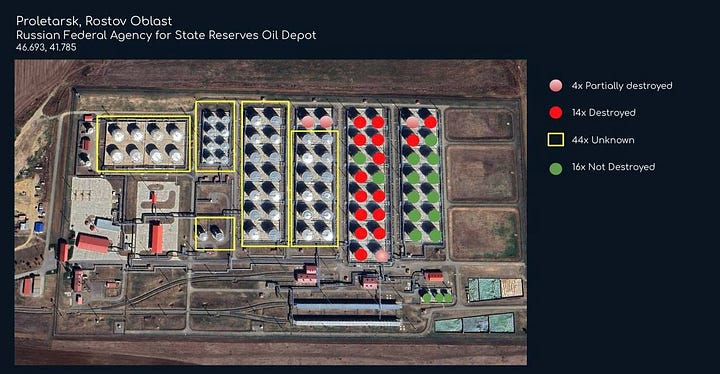
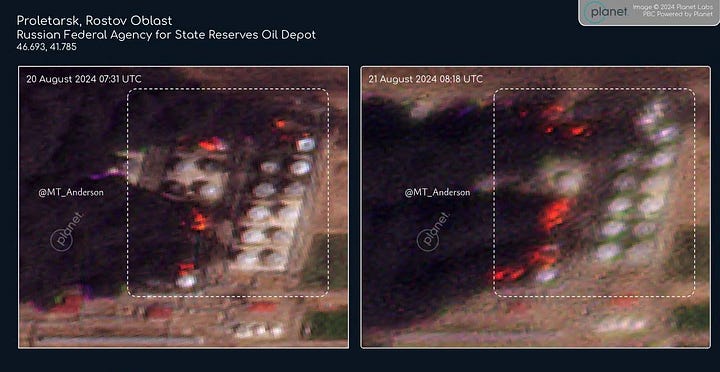
Though Russia has been adding anti-drone netting, it’s unclear how effective it’s been thus far:
Now they’ve destroyed, what’s being called by some, one of the last functioning oil ferries in Crimea with a hit last night in Kavkaz.
These combined paint a swelling picture of Russia under fire, such that alarmist titles like the following are given some semblance of notional validation:
And it’s easy to see how some even on the Russian side could begin feeling shaky about Russia’s ongoing war effort, but I have a different take on the ongoing situation. While the latest events have exposed some of the corruptions and shortcomings of the Russian military-state apparatus, at the same time they must be viewed as an accelerated psychological campaign on the part of the West, which is emptying its tank to create a sense of peaking paranoia and an atmosphere of crisis for Russia.
Ukraine has for now abandoned its objectives on the ground—in the real war—and has gone all in on the PR element. Granted, we’ve said this many times before, but even in the past Ukraine still balanced the two to a degree: for instance, last year to earlier this year, they still attempted moving forward in areas like Klescheyevka and around Bakhmut, pressing advancements in certain other regions in Zaporozhye. But now, they’ve gone on full retreat, and repurposed the vast majority of their resources to carrying out asymmetric attacks deep inside Russia for the sole purpose of destabilizing Putin’s public concensus.
There is a grave danger in doing this for Ukraine, the consequences of which we’re already beginning to see.
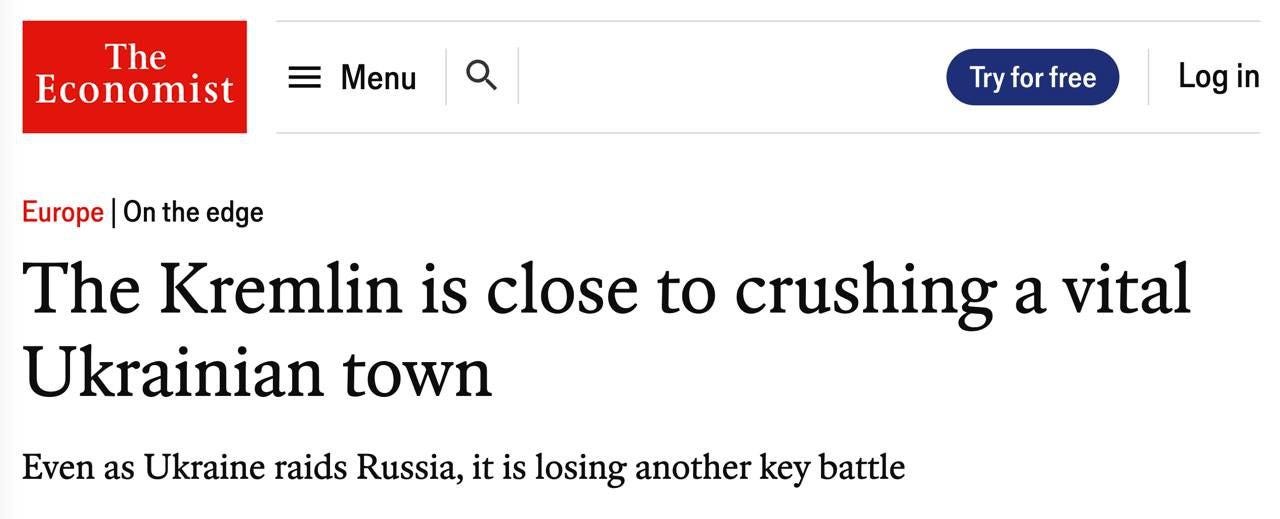
From the Economist article above:
From the author of the article:
The point is that, the collapse around Pokrovsk direction in particular is picking up speed. Yesterday, Ben Hodges downplayed the advances, claiming Russia only gained 50km since the fall of Avdeevka in February of this year. But I examined the timing more closely and found that from February to June, Russia gained about 10km going from around Berdychi, in west Avdeevka area, to somewhere between Sokil and Prohres; so, that’s 10km in 4 months. However, from June to August they’ve now gone 10km+ from there to the current line hear Grodovka, and upwards of 15-20km a bit further south.
That means they are now gaining in 2 months what they previously gained in 4 months. If such an acceleration picks up even more speed, then the collapse could get truly disastrous for Ukraine. At the current pace, Russia would potentially reach Pavlograd by this time next year, itself already not far from Dnipro.
Russians With Attitude had a good breakdown for what the outlook could be after Pokrovsk:
It is the central supply artery for all supply that reaches the Ukrainian forces in the Donbass (there's still the M03 from Kharkov, but it's less convenient and has always been secondary, particularly for the southern half of the Donbass).
West of Pokrovsk, there are a hundred kilometers of nothing. Empty steppes until you hit Pavlograd in the northwest, Zaporozhye in the southwest. There are various operations RuAF could employ after capturing Pokrovsk; we will look at them later, when the deed is actually done. But what's important is that it opens up operational space for the Russian "Center" group and gives them freedom of movement.
Ukrainian Rada MP Bezuglaya actually validated this viewpoint with a long post of her own; read the highlighted portion:
"Our units are being withdrawn from there, leaving entire front lines to their fate, ammunition is not being added, the Russians are passing through empty fortifications. In such circumstances, the occupation of Pokrovsk is a matter of the near future, and Toretsk is living out its last days. It looks as if we are giving up Donetsk Oblast," she wrote.
"Beyond Pokrovsk is a direct route to Pavlograd, where there are no fortifications at all, then the Dnieper. Beyond Toretsk is the Kramatorsk agglomeration, and then the Kharkiv Oblast... No equipment has been made for the administrative border of Donetsk Oblast," Bezuglaya added.
According to Bezuglaya, "Syrsky is taking the war to a new level of maneuvers from the times of World War II, where the stakes are on losing or gaining entire regions."
"But what is the price and what are the prospects? I am sure that he does not have clear answers either. It is a do-or-die game. The surprises are not over. The maneuvers of the Ukrainian Zhukov continue,” the MP said.
And UK’s Sky News says “Russians could take all of Donbass”:
Though it’s collapsing less slowly, the New York - Toretsk front is also undergoing fairly rapid advancement by Russian forces—here’s a map of just the past month:
Toretsk proper has even finally been entered, with Russian forces capturing some preliminary positions inside the city itself:
Ukrainian ‘journalist’ Yuri Butusov exhibited panic:
Ukraine is on the verge of losing Krasnoarmeysk (Pokrovsk) and the surrounding settlements. This is an important logistical hub for supplying the AFU, and its loss would signify a strategic defeat — Ukrainian propagandist Yuriy Butusov:
"In the past month of fighting, the enemy has completely captured the city of Krasnogorovka, taken control of 80% of the city of New York, entered Toretsk and is engaged in combat there, entered the city of Chasov Yar and is fighting there, and advanced within two kilometers of the dominant slagheap, which controls the approaches to Mirnograd, Pokrovsk, and Selidovo. There is a threat that the enemy may soon advance and engage in battles for these cities."
"In other words, we are facing the threat of losing a whole series of, or have already lost, or are on the verge of losing, a whole series of important, and as for Pokrovsk, key settlements and cities in the Donbass. Of course, this is a cause for great concern," Butusov said.
Meanwhile, former Ukrainian presidential advisor Oleg Soskin believes Zelensky’s regime will collapse by October:
Former Kuchma adviser Soskin predicted Zelensky's imminent collapse "We can say by many indicators - political, economic, financial, military, logistical - that Zelensky's regime will be completely exhausted by October," he calculated.
Interestingly, Apti Alaudinov states that not only will Ukraine’s Kursk incursion be over in 2-3 months, but the entire SMO will end at the same time:
In another video he clarified the statement:
In short: he says this year either Ukraine will be entirely exhausted and the SMO will end, or NATO will have to get involved to save Ukraine, and WWIII will begin.
What all these predictions have in common is the sense that we all can feel, that something has shifted, that Ukraine is acting extremely irrationally, pushed by some urgent time-sensitive need. That urgency can only logically be the knowledge that something is running out—whether it’s manpower, ammunition, Western partner support, or a combination of all the above.
Russian frontline reporter Kharchenko’s poignant take:
The Ukrainian counteroffensive near Sudzha is increasingly reminiscent of the battle for Rabotino. We must give credit to the Ukrainian generals, they were able to create conditions under which the Ukrainian army regained its spirit.
A year ago, the enemy was moving forward in Zaporozhye because it dreamed of reaching Crimea and ending this conflict on its own terms. Those dreams were dashed against the Russian defense, and the Ukrainian army began to fade away. Despite all efforts, they surrendered territory and saved reserves.
The breakthrough on the Kursk front gave the Ukrainian troops strength and now they are throwing more and more units into the heat of battle, regardless of losses. The initial raids for tens of kilometers have now been replaced by positional battles. Artillery is increasingly firing in both directions. The sky is saturated with drones. Footage from the front is increasingly reminiscent of the battles for Verbovoye or Rabotino.
The enemy is now intoxicated with its successes, so it is acting reactively. Catching a single enemy vehicle in other directions was considered a great success, but near Kursk they move in groups. If we hold the front, and the enemy continues to burn their reserves, then we will be able to repeat the success near Rabotino.
Ukrainian society is not made of iron, the surrender of Pokrovsk and a second Rabotino can finally nullify their offensive potential. So we have a chance to turn our betrayal into a victory. The only thing that bothers me is that the battles are being fought on our soil. The same events in the Sumy region would be perceived by Russians completely differently.
Alexander Kharchenko
While it’s true that Ukraine is losing a far larger amount of equipment in Kursk than usual, I’m not convinced it still represents a dangerous expenditure simply because the vast majority of it is expendable light armor that is virtually unlimited in the West, though of course there have been some painful prestige system hits as well.
Russian MOD just estimated the AFU’s losses there as follows:
Total Ukrainian losses since the beginning of their attack in Kursk region of Russia.
—4,400 troops
—65 tanks, 27 infantry fighting vehicles
—53 armoured personnel carriers ● 316 armoured fighting vehicles —133 motor vehicles —31 artillery guns
—5 SAM launchers
—9 MLRS launchers, including three of HIMARS system and one MLRS system
—6 electronic warfare stations
—units of engineering vehicles, including two counterobstacle vehicles and one UR-77 mine clearing vehicle.
A more independent analysis could only find 100-150 confirmed destroyed vehicles, so it’s impossible to know where the real number lies—probably somewhere in the middle as usual.
—
Now that the Kursk offensive has stalled, the only next step Zelensky has up the escalation ladder is begging the US for ‘permission’ to conduct longer range strikes with US weaponry. The key point everyone misses about this though is that this approval is not about accurately or powerfully hitting Russian targets. No, it’s all about simply getting NATO as involved as possible in crossing Russia’s ‘red lines’ in order to provoke a conflict between the two.
Not only does the new Politico article above imply this, it even offers us an interesting insight about why the US is hesitant to lift restrictions:
In reality, Ukraine has far better success hitting deep Russian sites with low-tech drones which are much harder for Russia to take down, owing not only to their large number and swarm ability but also to how low and slow they can fly, bypassing radar nets. Even Rob Lee just came close to admitting the more premier systems have been mostly useless in hitting Russian territory as Russia easily shoots down ATACMS, Storm Shadows, etc.:
Read the Politico quote below again:
The small drones are a much harder problem also because they’re often made of flimsy materials which are nearly invisible to radar, as the radar waves pass through them—like the infamous cardboard drones.
Some interesting technical matters.
Ukrainian sources released a map of what they believe are Russian force concentrations on each major front:
That roughly amounts to 10-20 brigades, or 3-6 divisions, or 1-2 corps per front.
The latest for Ukrainian unit involvement in Kursk—though it’s only some battalions from each of the brigades below:
And here’s one breakdown of Russian units there:
—
Syrsky likewise released an interesting breakdown of Ukraine’s shoot downs of all Russian missiles since the start of the conflict:
❗️Statistics of missile strikes by the Russian Armed Forces on the territory of Ukraine from Syrsky's slide
In total, since 02/24/2022, Russia has used 9,627 missiles (2,857 were allegedly shot down).
About strike UAVs. 13,997 were launched (!). Allegedly 9,272 were shot down.
The biggest problem is the Iskander-M/KN-23, Kh-22, Kh-25 and its modifications. Well, and like the S-300. Allegedly 3,008 of them were launched in 2.5 years (!). There is nothing to intercept them with, according to Syrsky.
Statistics: Report of the General Staff of Ukraine on the effectiveness of air defense.
— Total missiles launched by the Russian Air Force/Armed Forces: 9,627
Total missiles shot down: 2,857
Efficiency 29.68%
— Total UAVs launched by the Russian Air Force: 13,997
Total UAVs shot down: 9,272
Efficiency 66.24%
— Missile kill efficiency:
Kinzhal: 25.23%
Kalibr: 49.55%
Kh-101/555: 78.06%
Onyx: 5.69%
Iskander-K: 37.62%
Kh-35: 6.67%
Kh-22: 0.55%
Iskander-M, KN-23: 4.31%
Zircon: 33.33%
Tochka-U: 8.82%
Kh-25/29/31/35/58/59/69: 22.17%
S-300/400: 0.63%
So, not only do we have the remarkable number that Russia has allegedly fired nearly 10,000 total missiles, but that Ukraine has only shot down below 30% of them
The most difficult to shoot down continues to be the Kh-22, of which I wrote about here, explaining why the Kh-22 may be even far deadlier than the Iskander or Kinzhal, according to some experts:
—
Syrsky also gave this slide, showing the alleged artillery expenditures:
In short, it claims that Russia is back up to 45,000 shots per day, while Ukraine is up to 15,000. This seems extremely high for Russia and could perhaps refer to all types of tube artillery and MLRS, including 122mm, 130mm, 152mm, etc., rather than just 152/155mm.
A Russian analyst’s take on the above:
Yesterday, all colleagues already took apart the disgrace of Commander-in-Chief Syrsky, who decided to tell the truth and confirm all our and colleagues’ inside information that only 30% of missiles were shot down, and all official daily reporting was a lie.
But all colleagues missed the message that if so many Russian missiles were “missed,” then it means they were flying somewhere, and from this it follows that the losses of manpower, equipment, ammunition, and resources are enormous for the Ukrainian Armed Forces.
Now the conclusion: the real situation is deplorable, and the Kursk adventure was needed to shift the focus from the negative. Bankova knew that such a step would give it situational hype, which could be sold to Western sponsors for the right to new loans and arms supplies. But something went wrong.
Including the leak about the undermining of the Northern Streams by Ukraine, broke the OP part of the game, almost “cutting off” one of the main sponsors - Germany.
A lot will come to light in the future and people will see the light.
Most likely, Syrsky and the OP were prompted to tell the truth by the desire to wrest more air defense from the West, which is in short supply everywhere in the world.
Time will tell if it will help. We are watching...
—
Ukrainian MP Goncharenko complains that Zelensky is edging toward mobilizing 18 year olds:
—
For all the jeering outcries that Russia continues to suffer security lapses, NATO itself is undergoing some very odd manifestations. In Poland, trucks carrying Ukrainian equipment continue to burn down:
Now there are strange reports out of Germany:
Unidentified drones are flying over the Brunsbüttel nuclear power plant in Germany, and German police are unable to determine who sent them. According to German media reports, authorities believe the drones are Russian, sent from the North Sea. - FRWL reports
With the fearmongering dialing up to max level:
—
In the meantime, Josep Borrell has admitted that NATO is involved in Ukraine:
—
Military Watch magazine reports that 20 out of 31 Abrams have been destroyed, with the tank proving ineffective against Russian ATGMs:
—
A unique battle occurred when a Russian Bmp-3 or BTR-82 encountered a Ukrainian Kozak armored car and Bmp-2 at point blank range in Kursk. The Kozak swiftly reversed out, but the Ukrainian Bmp-2 was hit at point blank range by the Russian 30mm autofire, being destroyed in the process:
Ukrainians tried to claim it was Russian friendly fire, but in fact many different images and reports came out proving it was a Ukrainian Bmp-2 that was destroyed. Here is the image of the Bmp-2:
With Ukrainian channel admitting to it, including that the soldiers inside were killed afterwards:
—
Lastly, many know that Russia has been working on their Boeing airliner replacement, the MC-21, for a long time now. A new video has demonstrated its unreal capabilities during ongoing test flights:
—
Lastly, Zelensky says the Kursk attack was a way to end the war on ‘Ukraine’s terms’, admitting what every analyst has now been suspecting:
Meanwhile, his own officers believe it was nothing more than a PR stunt to get clicks and likes online:
Kursk offensive is for likes and distraction.
Ukraine’s leadership did the operation in Kursk because everything is screwed up at the front and in the economy. The goal was to "freak everyone out."
At the same time, the strategic goals of the invasion are unclear, said Dmitry Glushchenko, an officer of the Armed Forces of Ukraine
Your support is invaluable. If you enjoyed the read, I would greatly appreciate if you subscribed to a monthly/yearly pledge to support my work, so that I may continue providing you with detailed, incisive reports like this one.
Alternatively, you can tip here: buymeacoffee.com/Simplicius


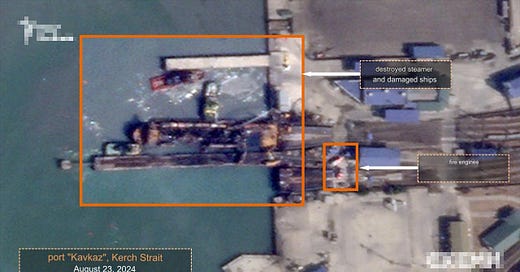




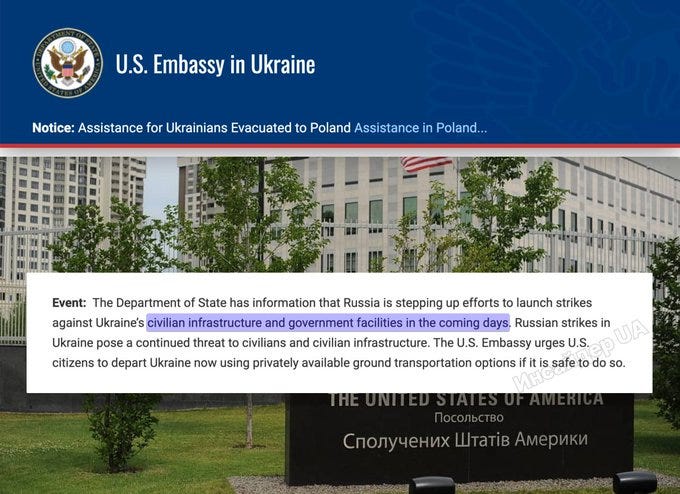

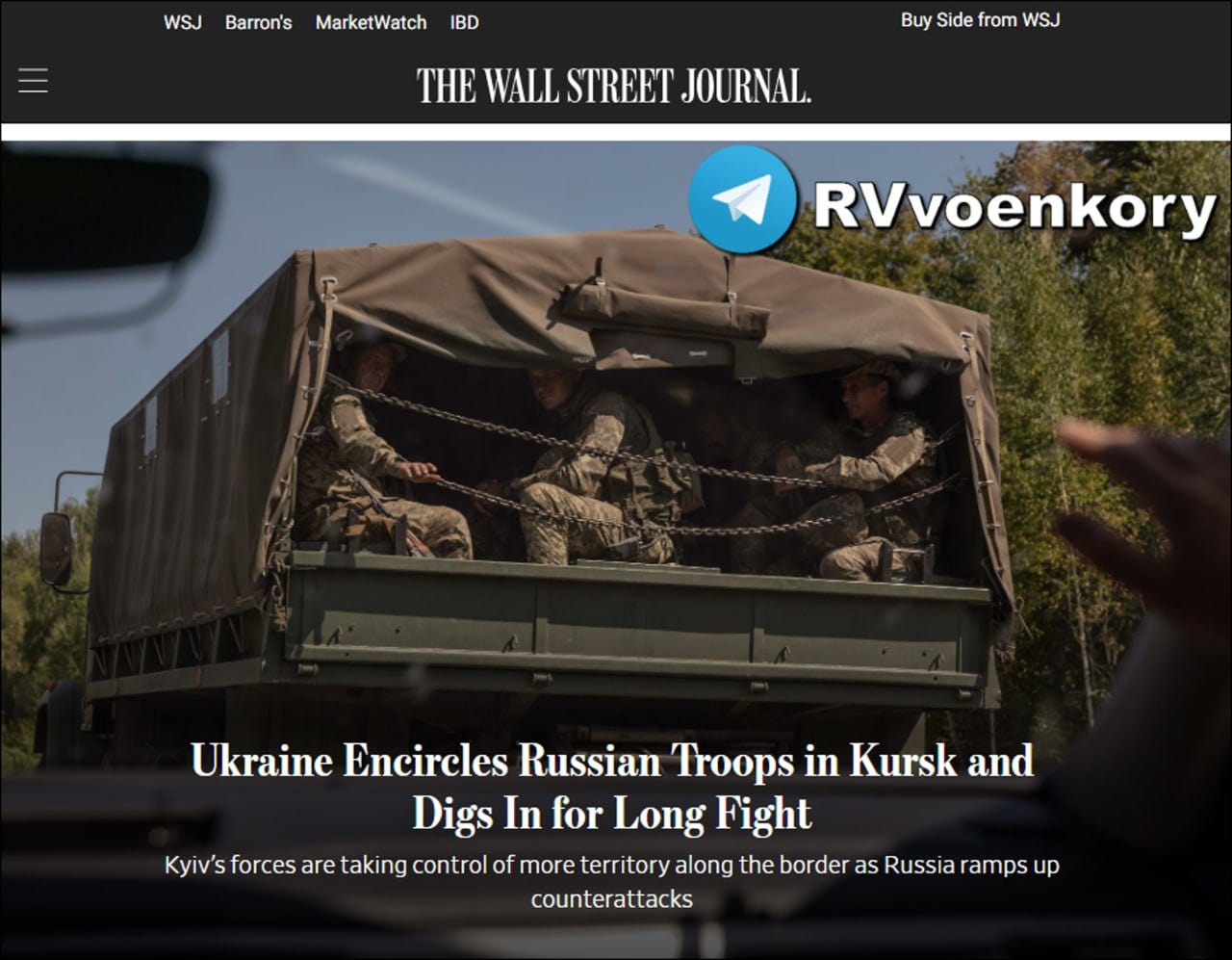
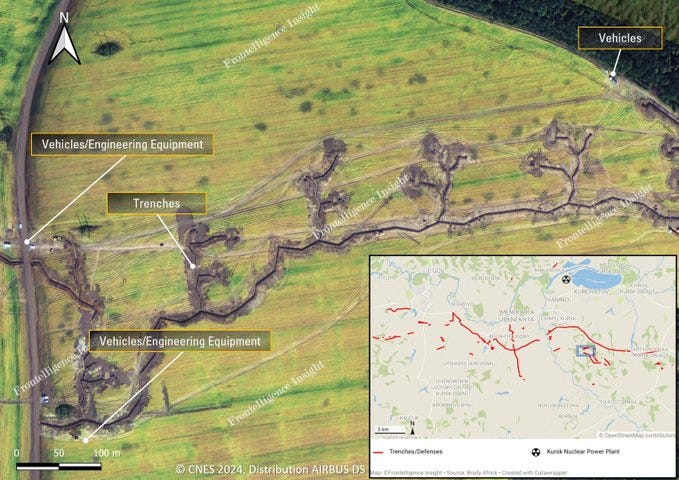
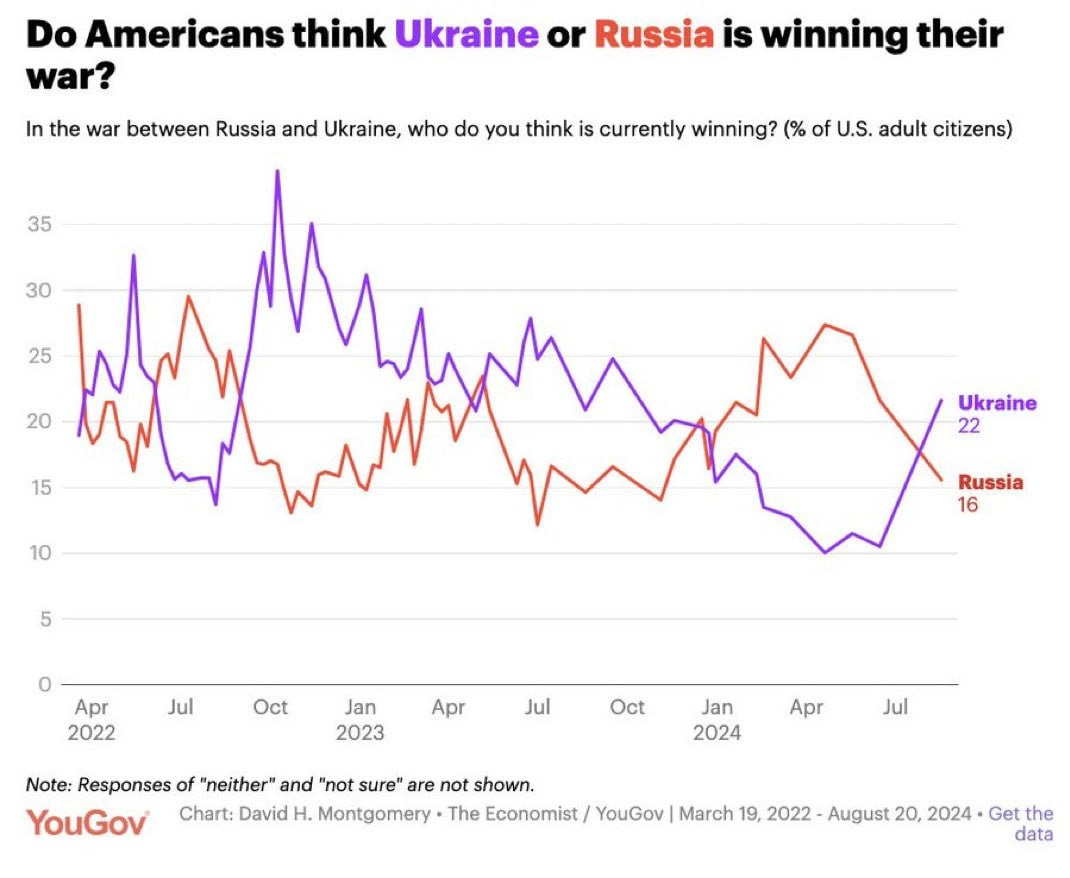
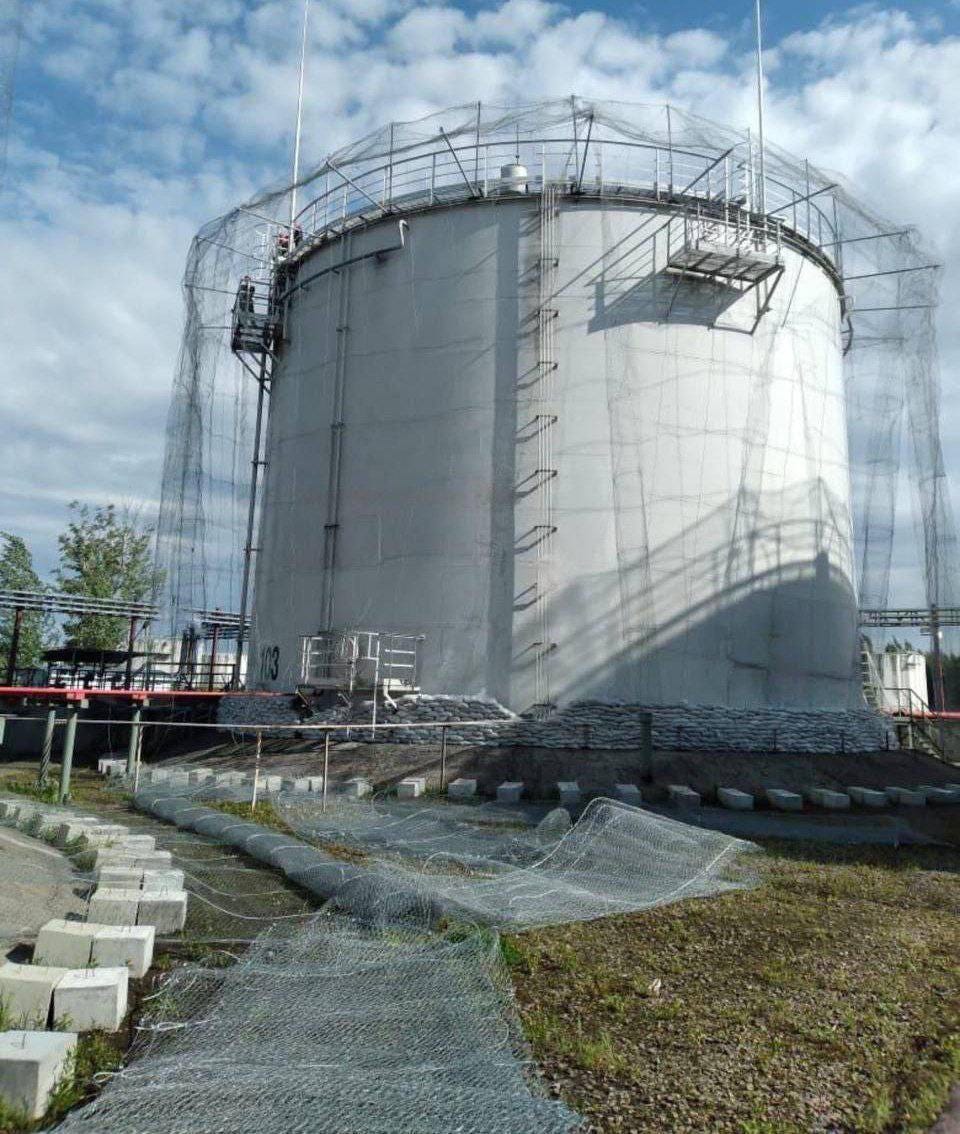
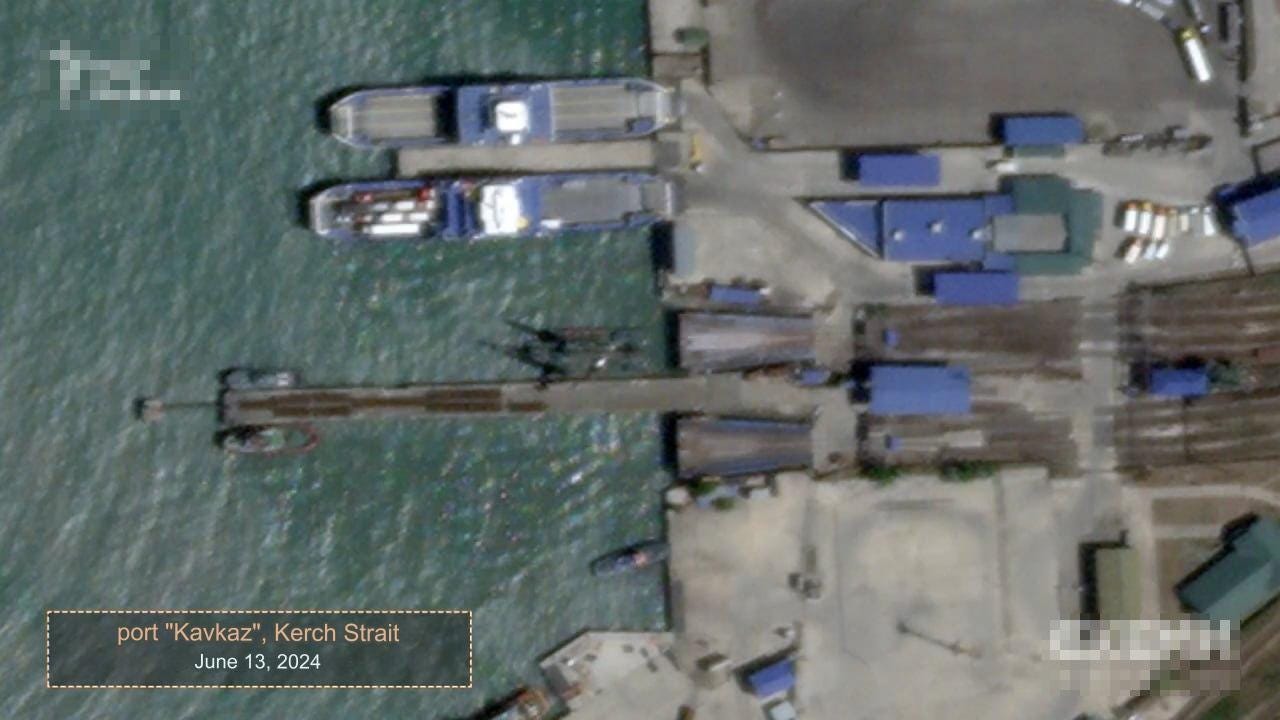

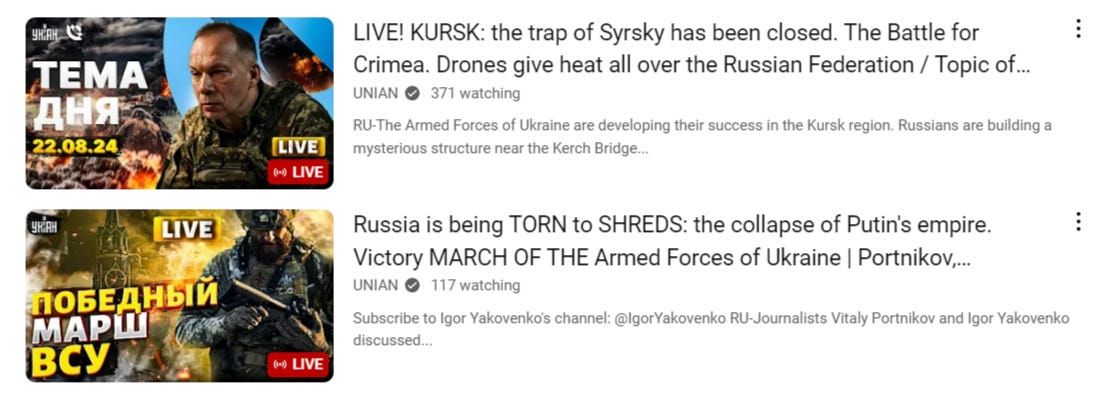
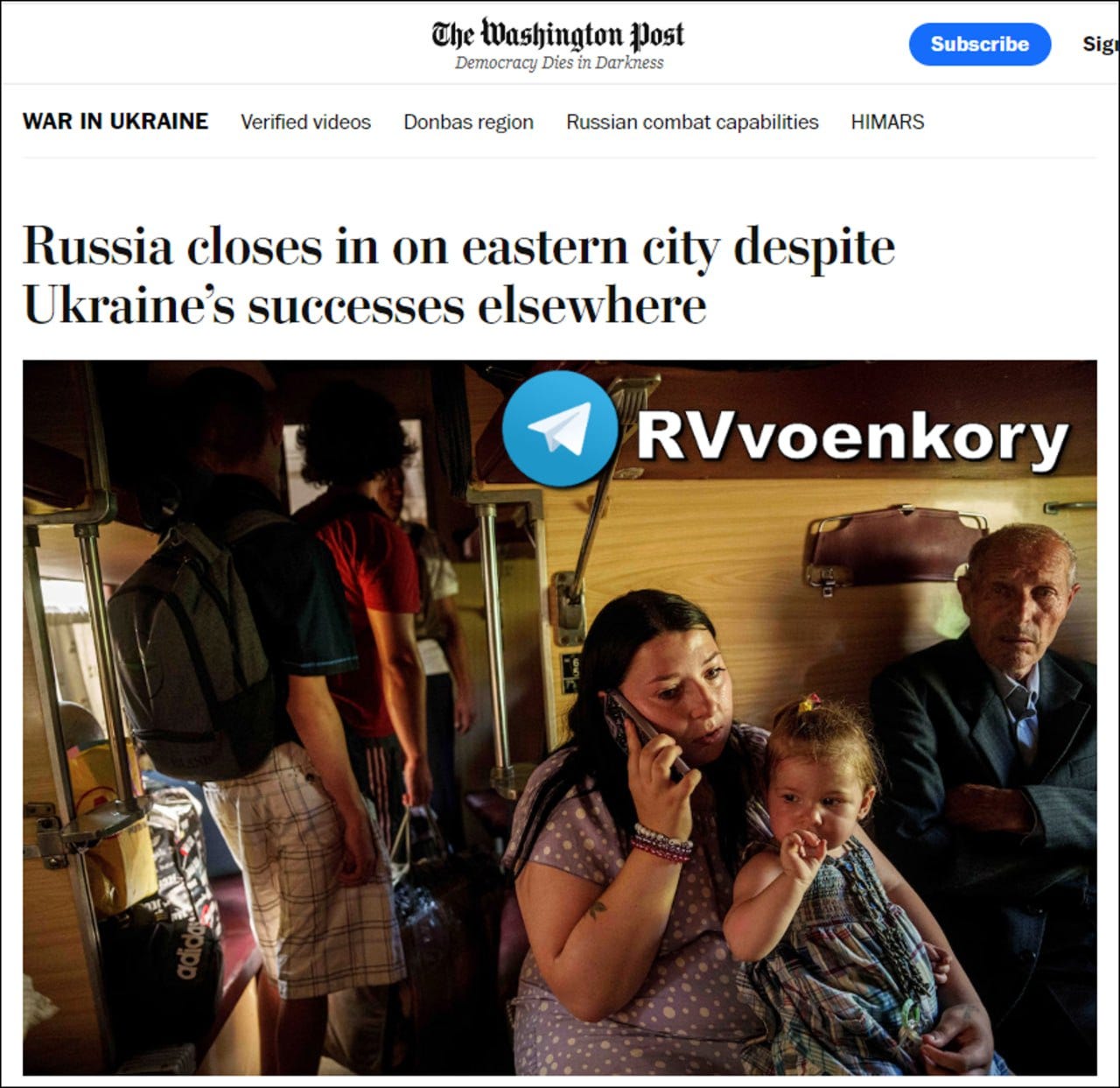
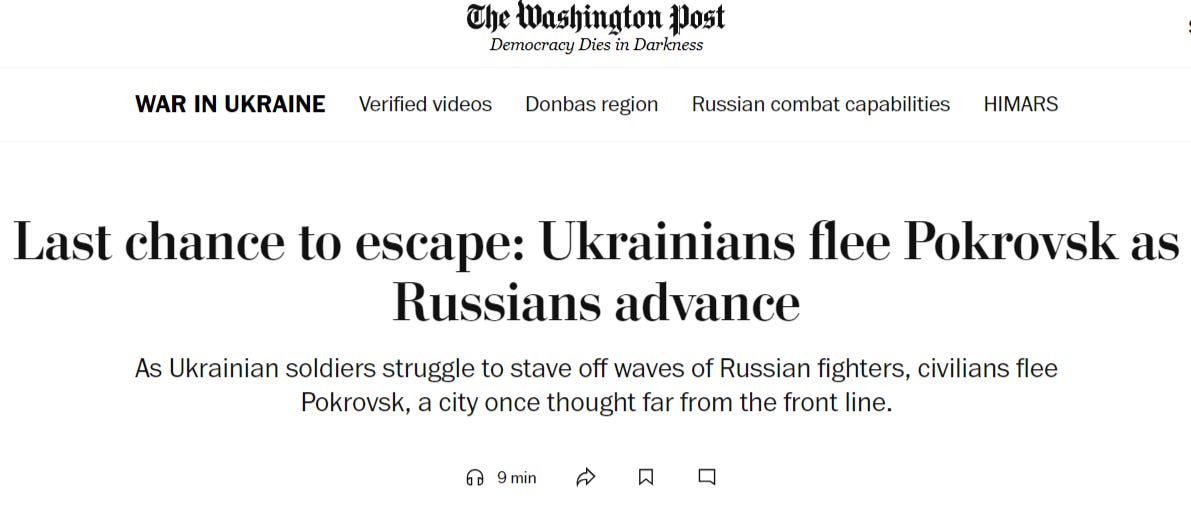
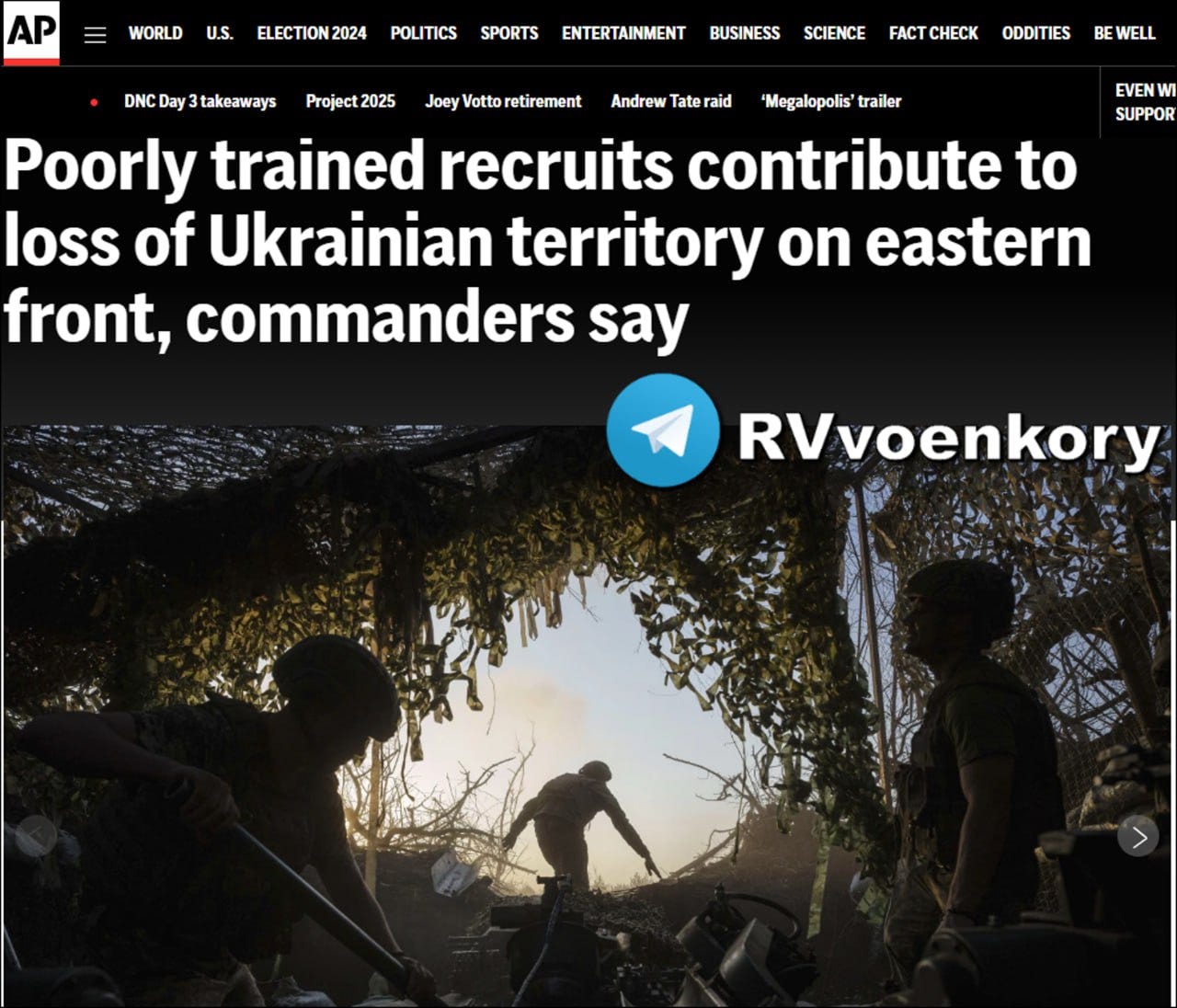


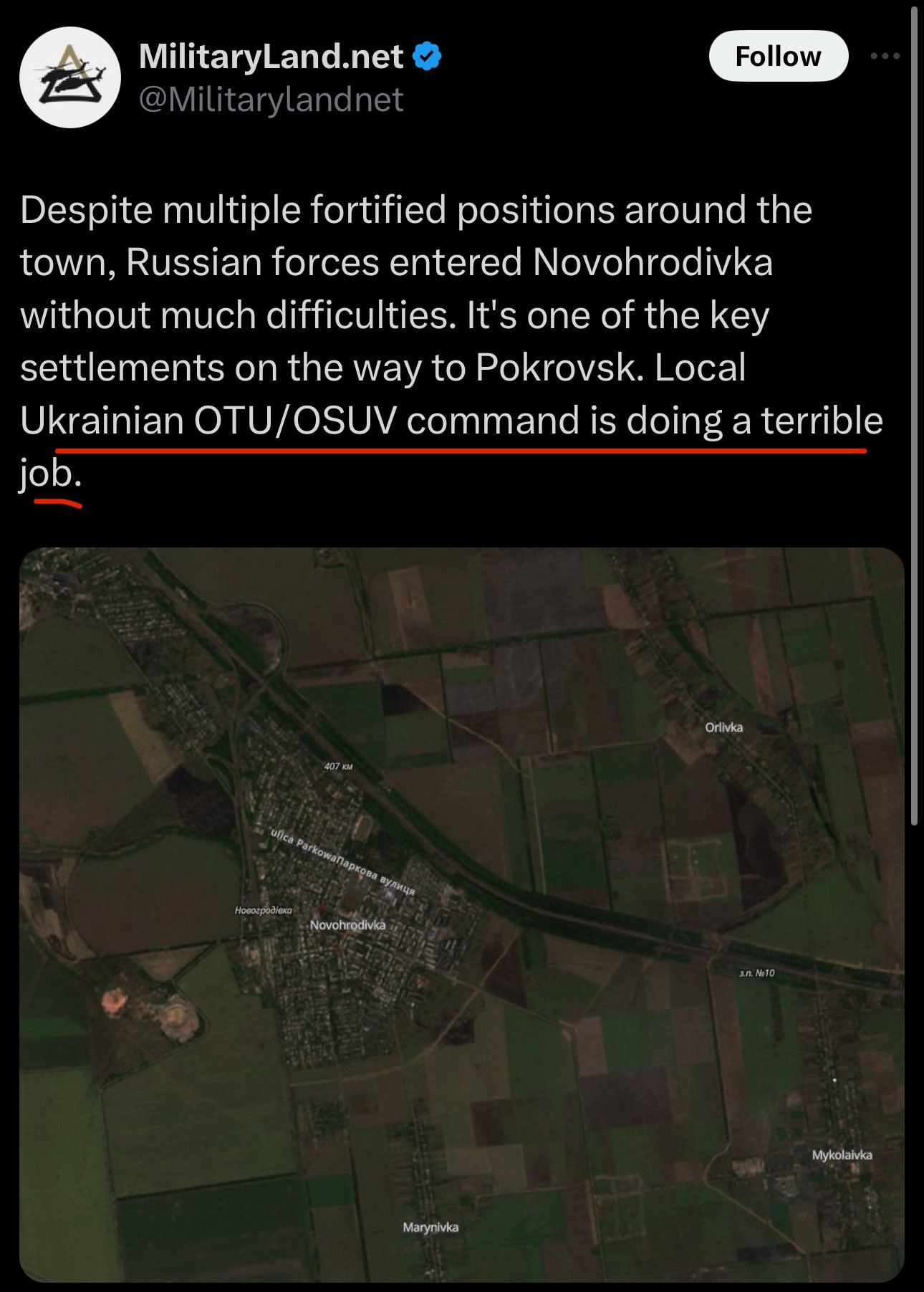
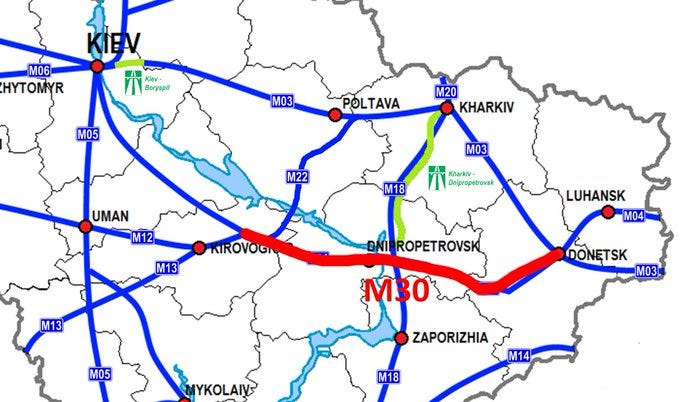
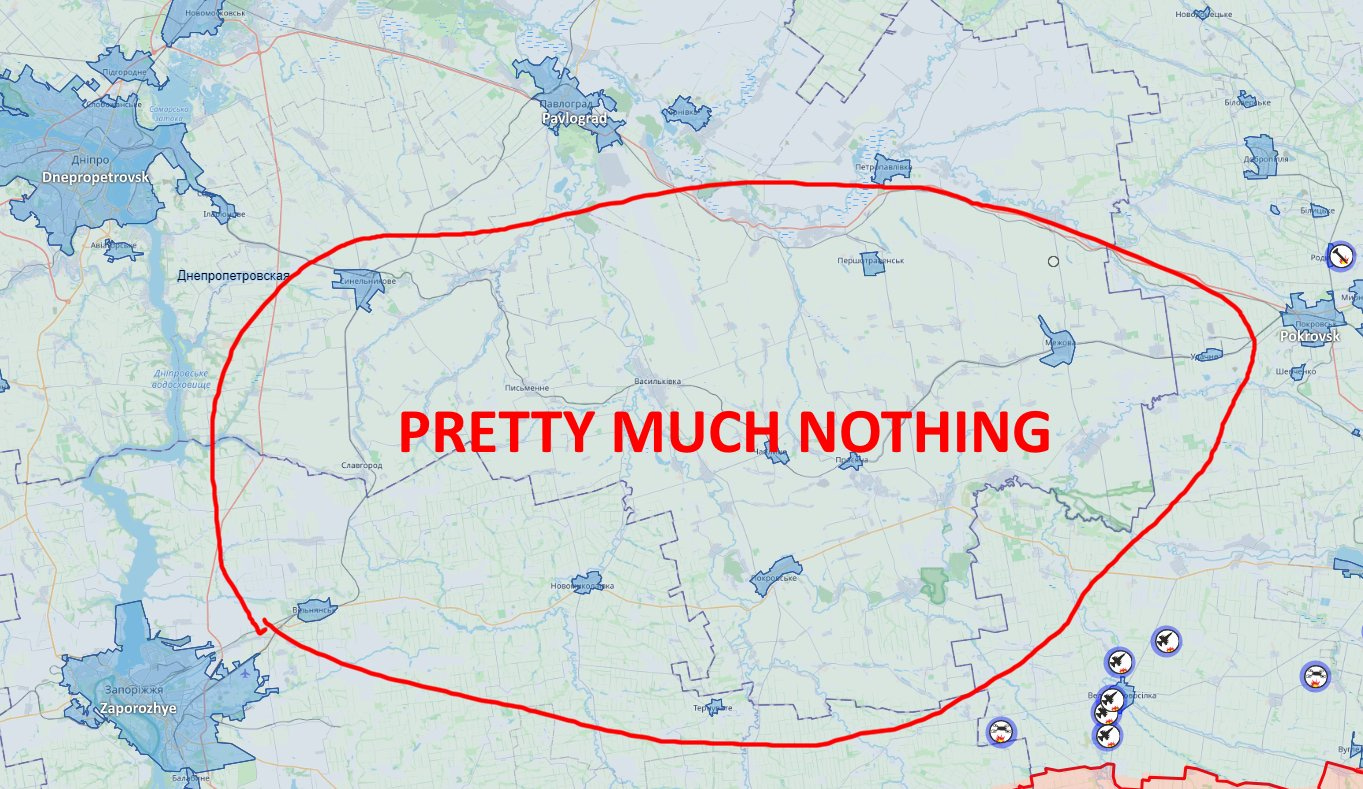
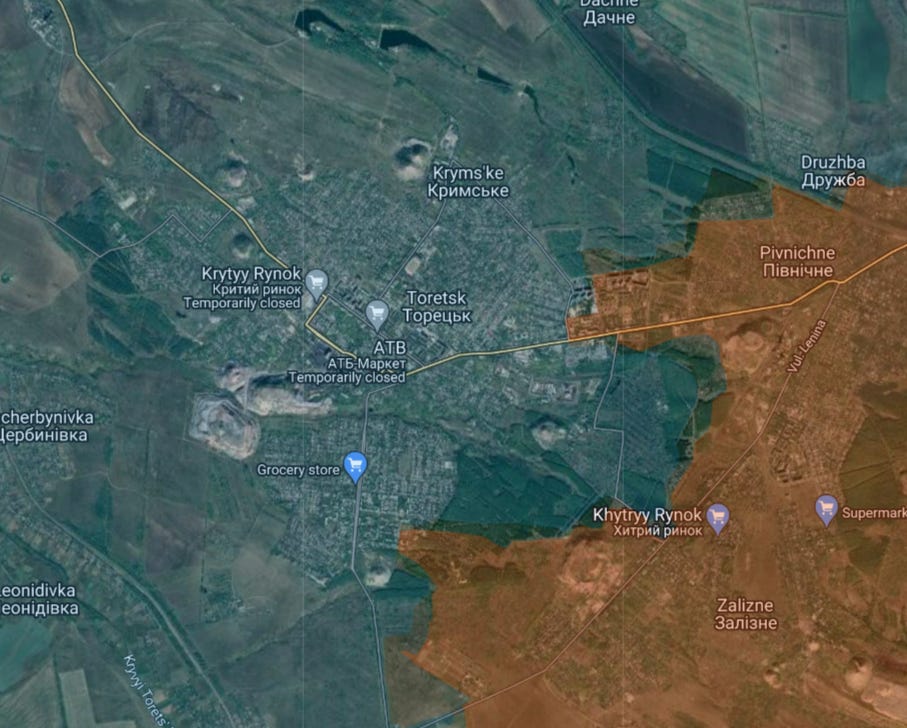
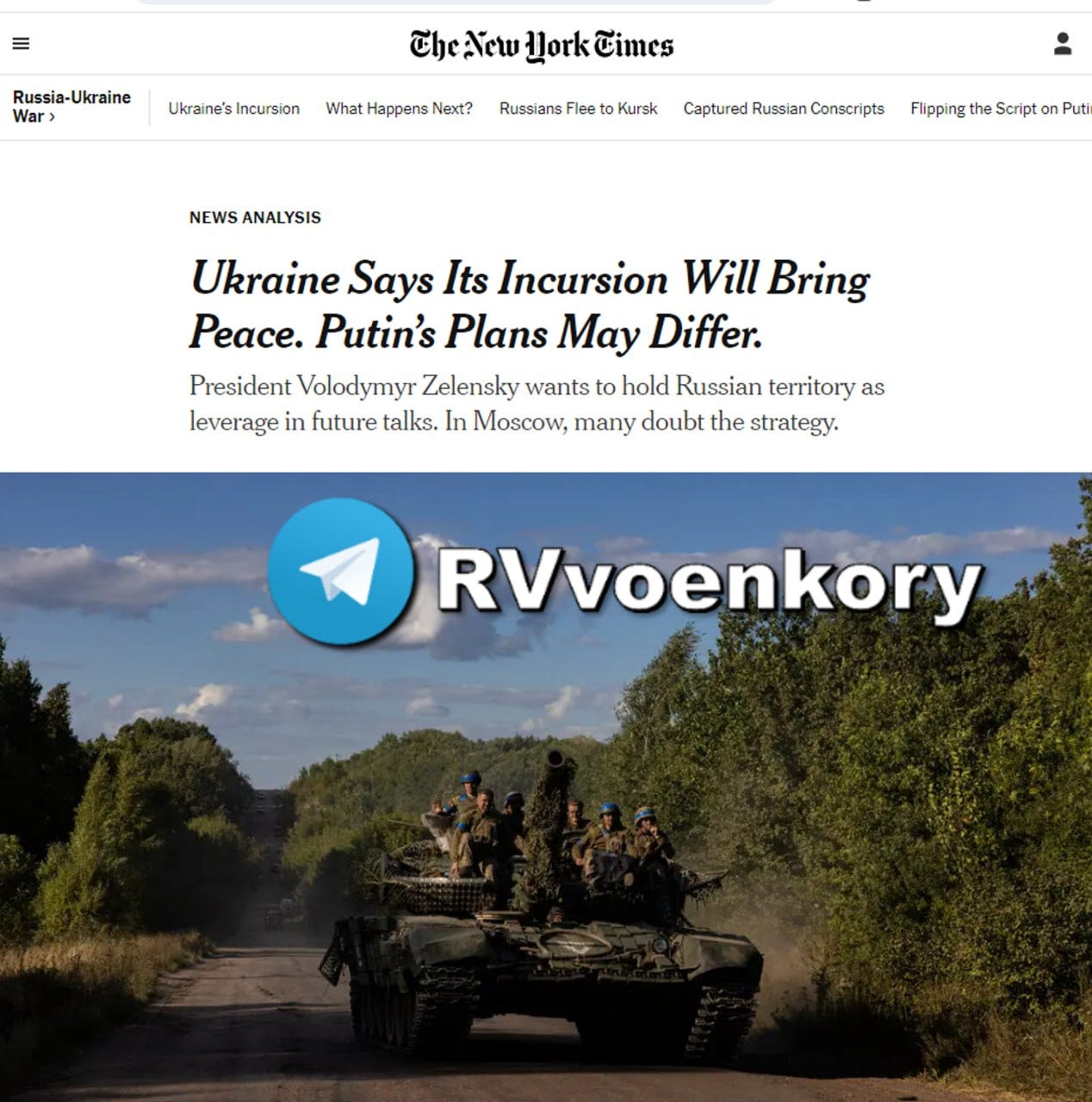
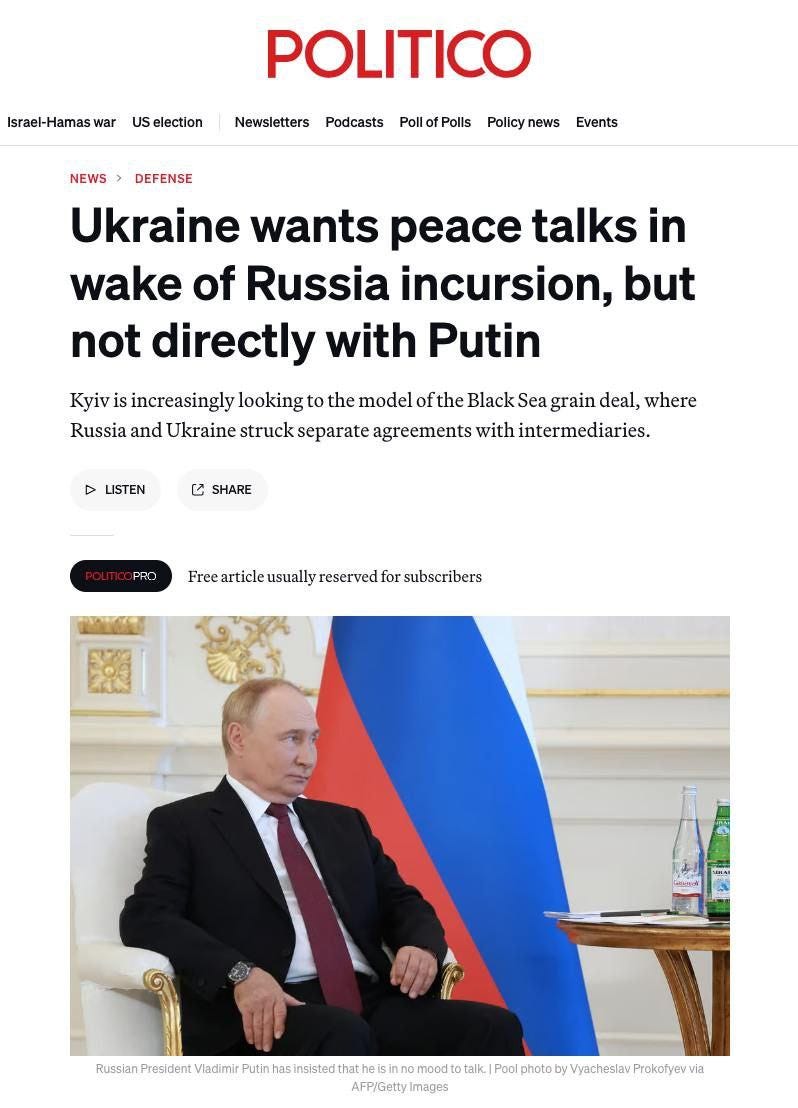
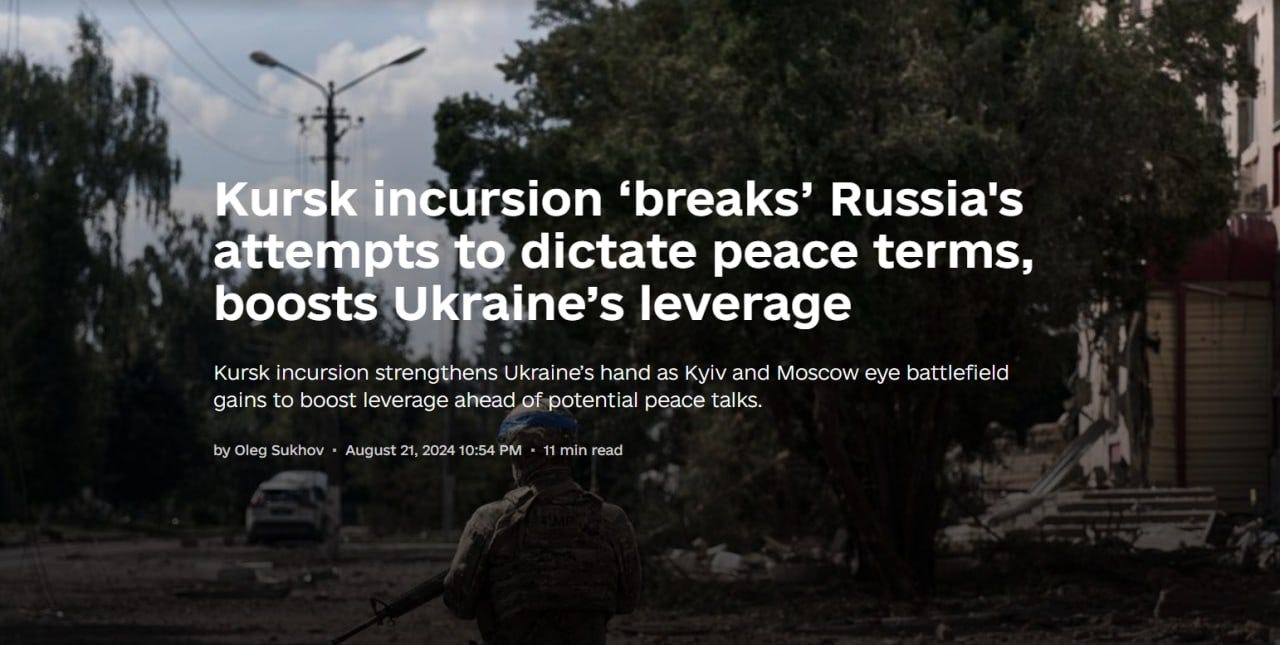
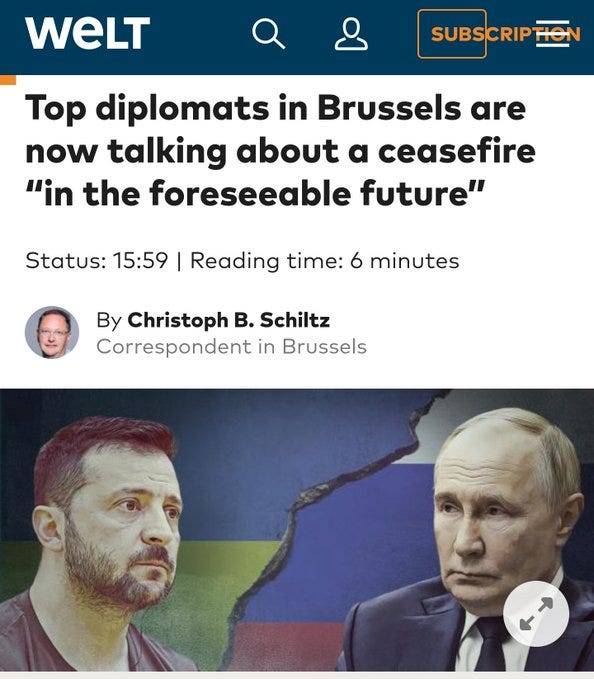


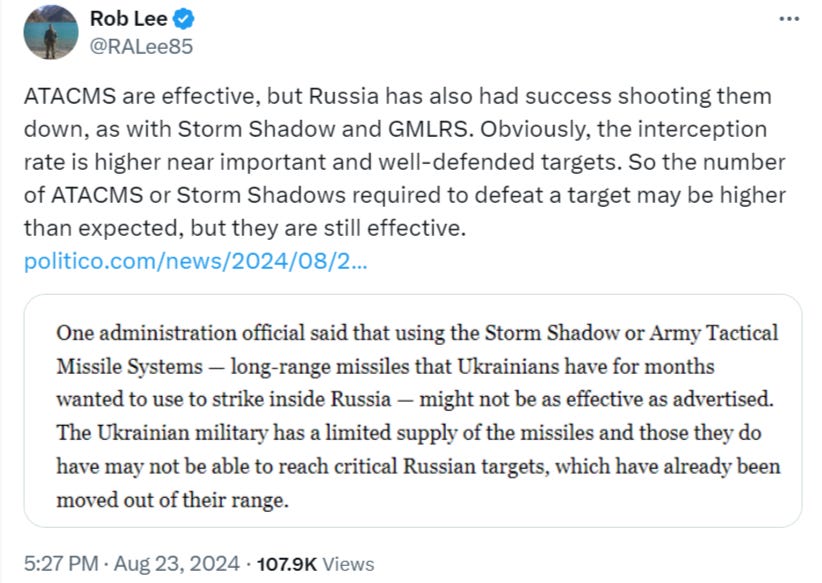
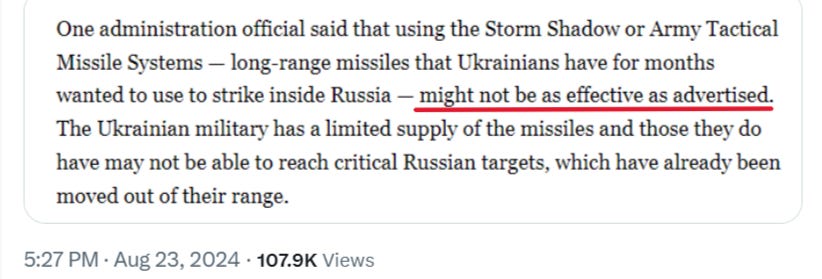

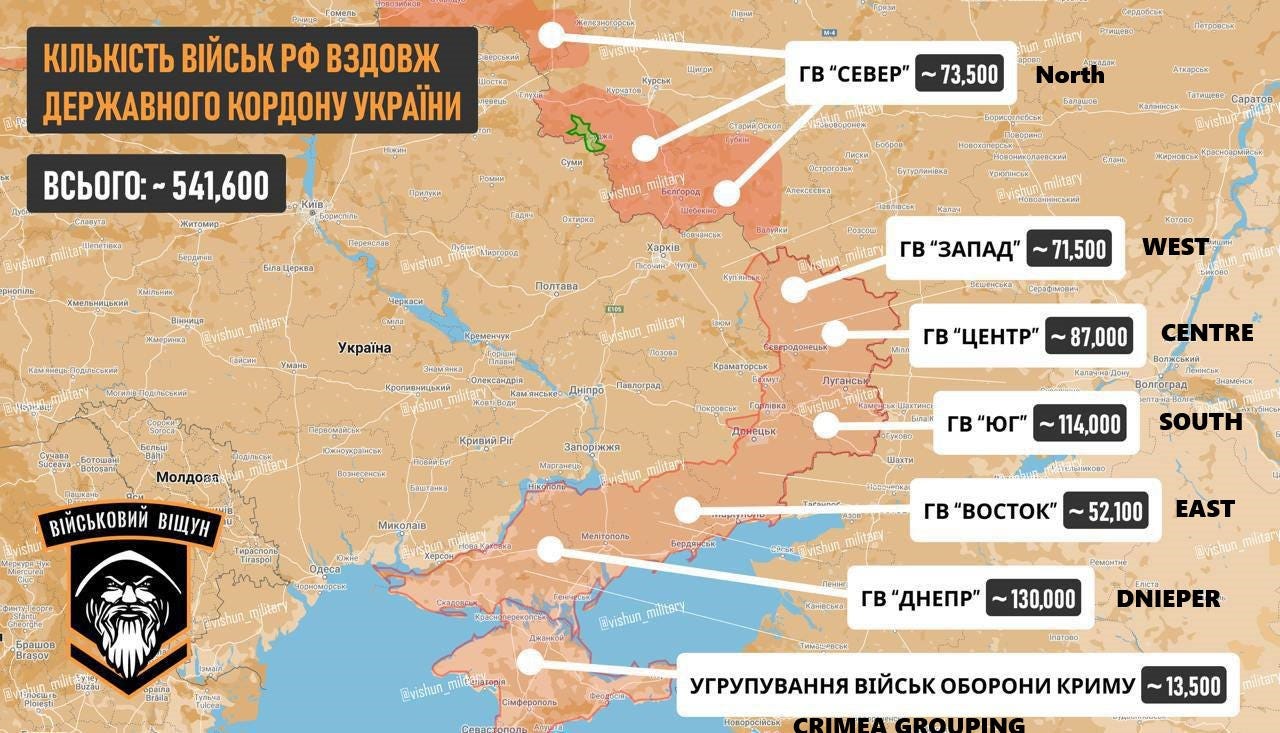
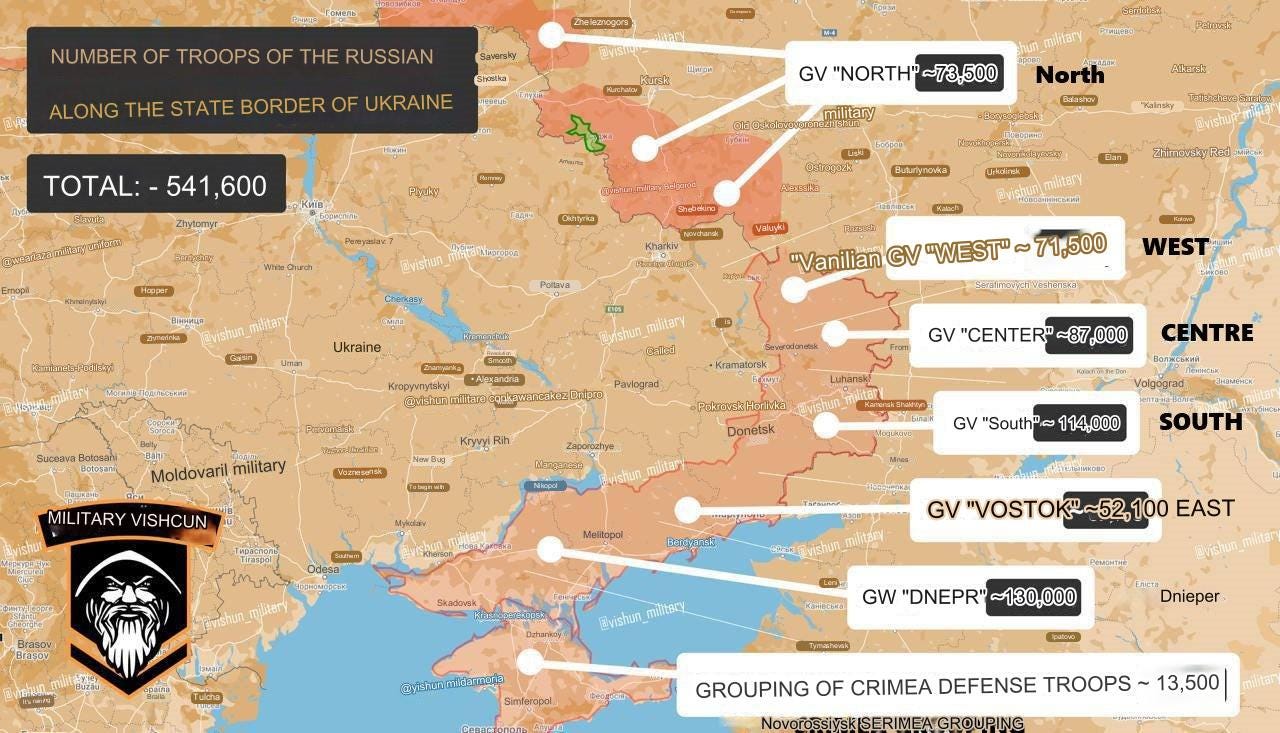
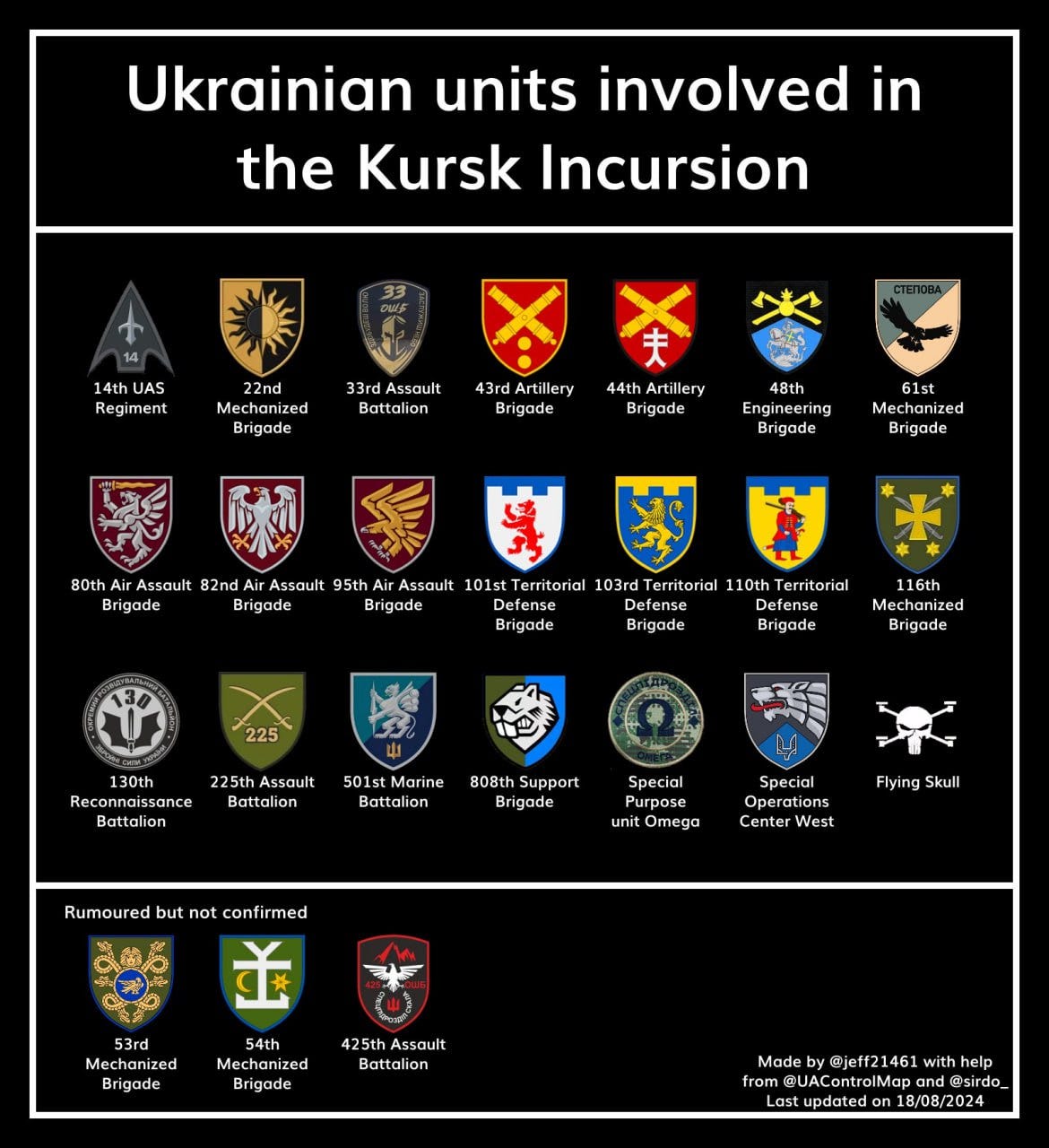
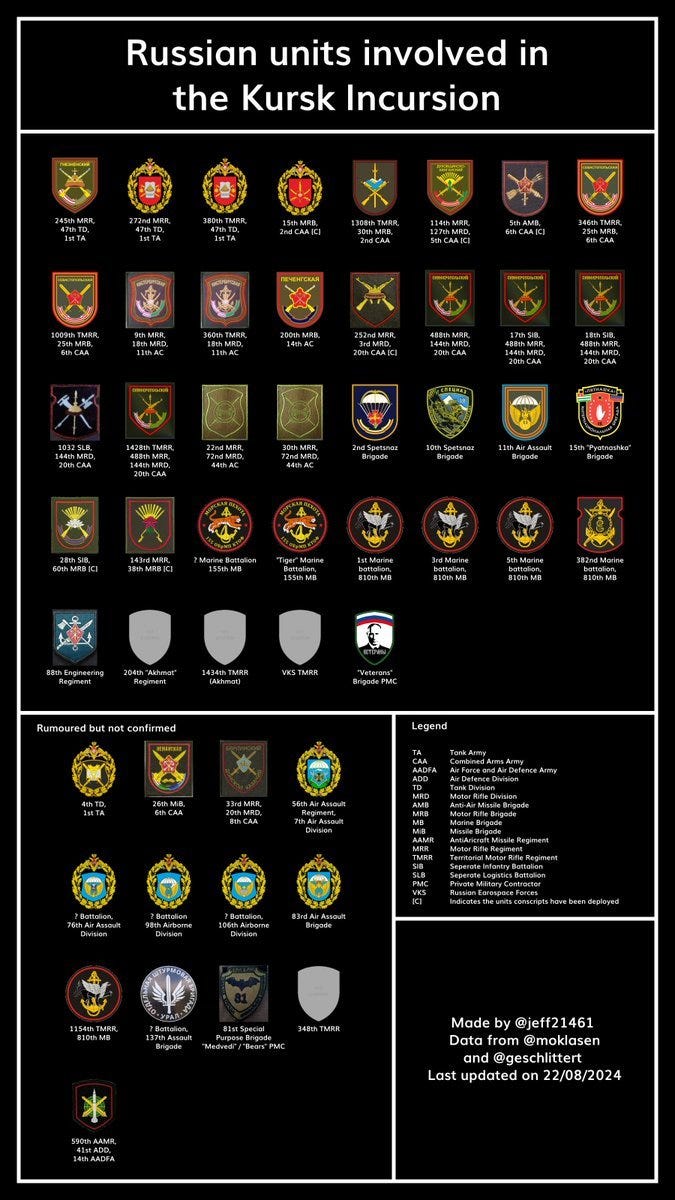
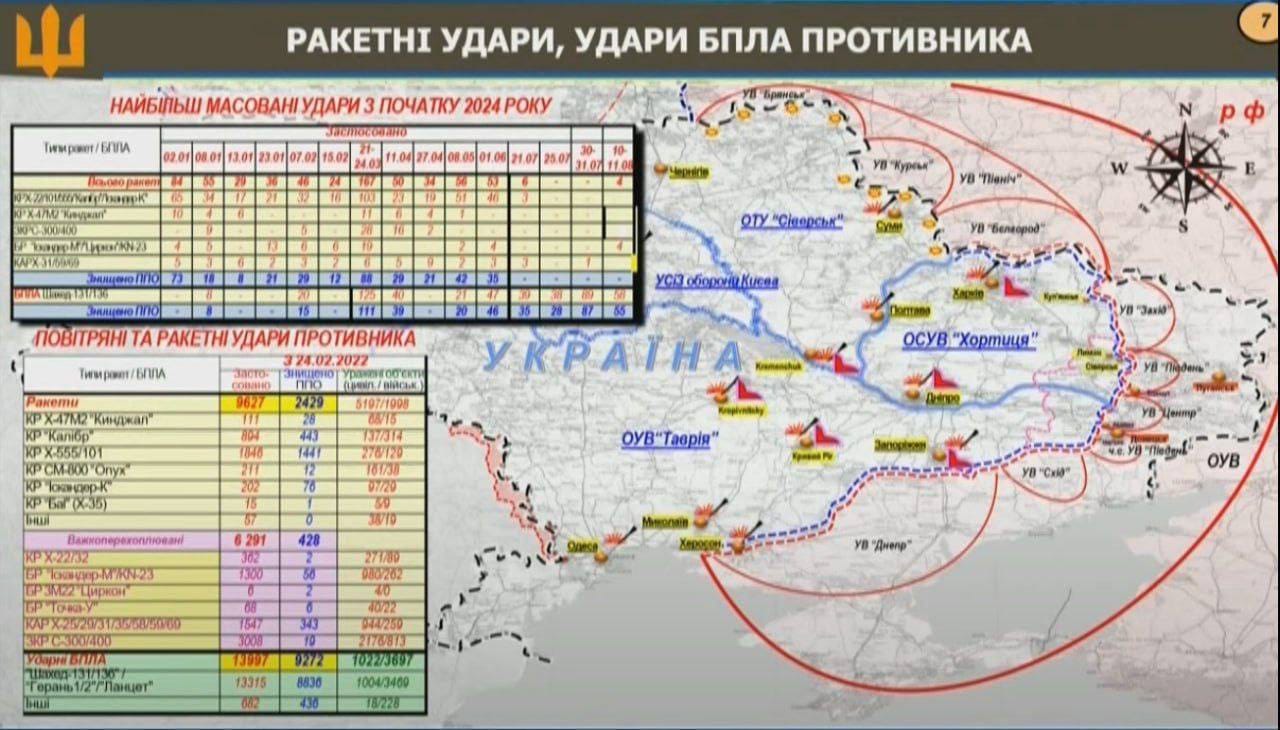
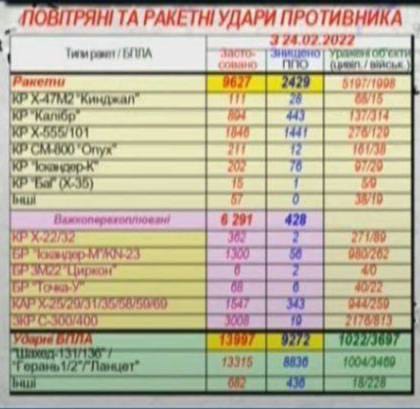
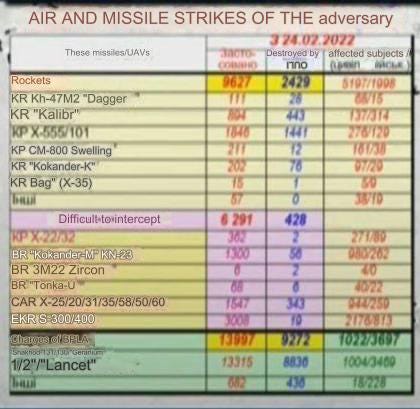
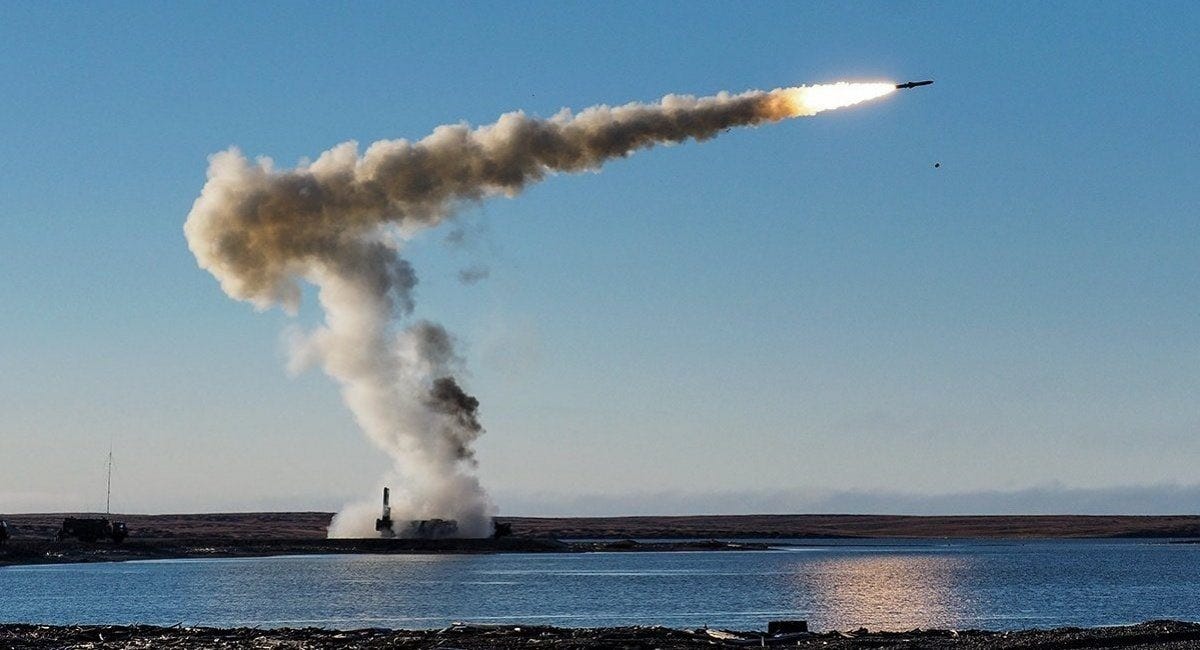
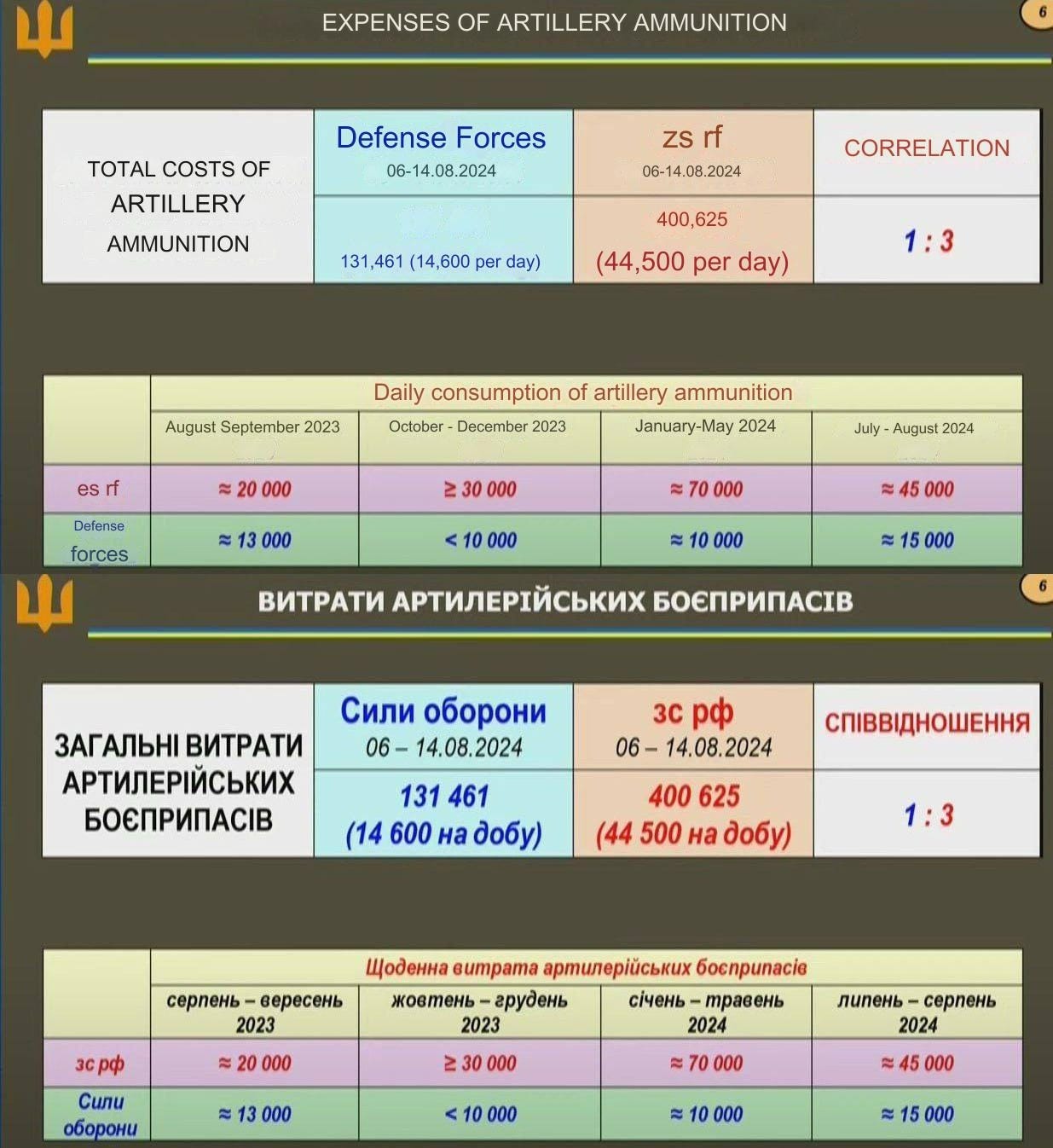
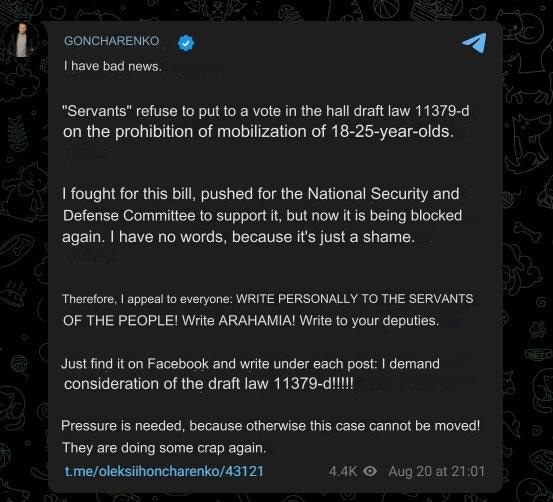
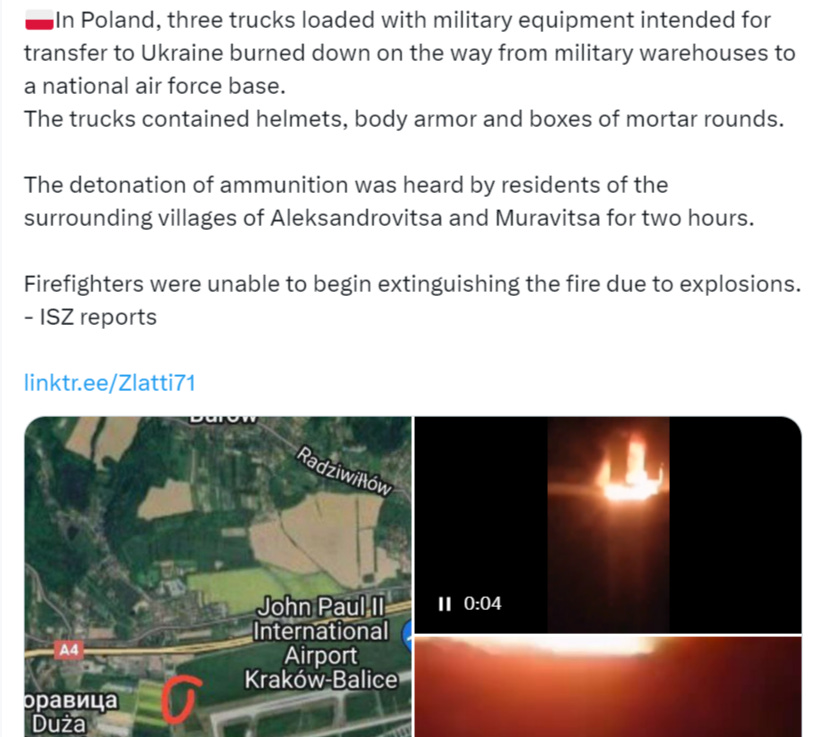
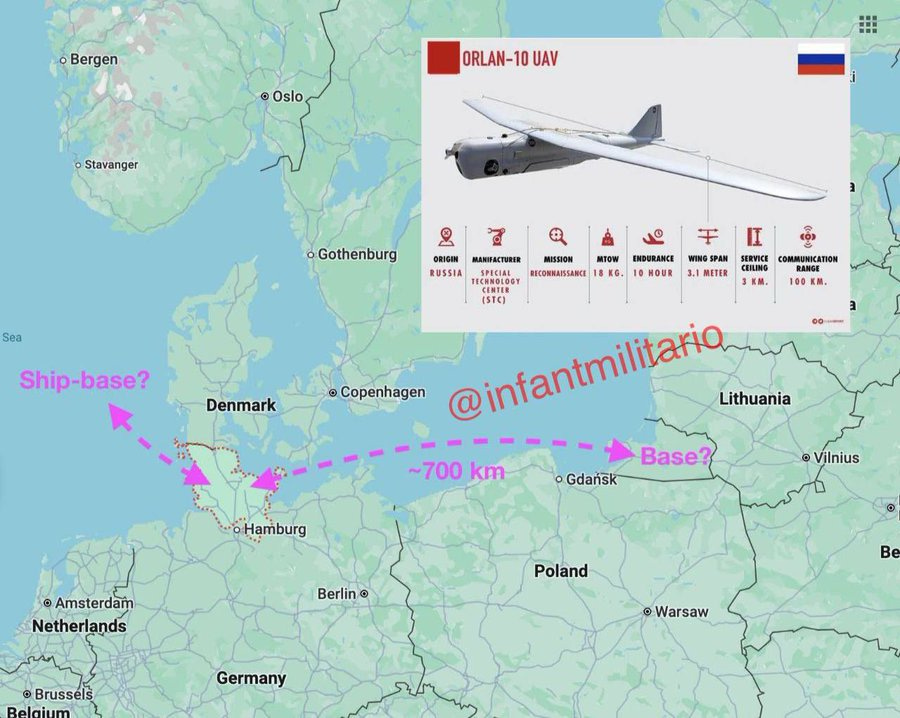
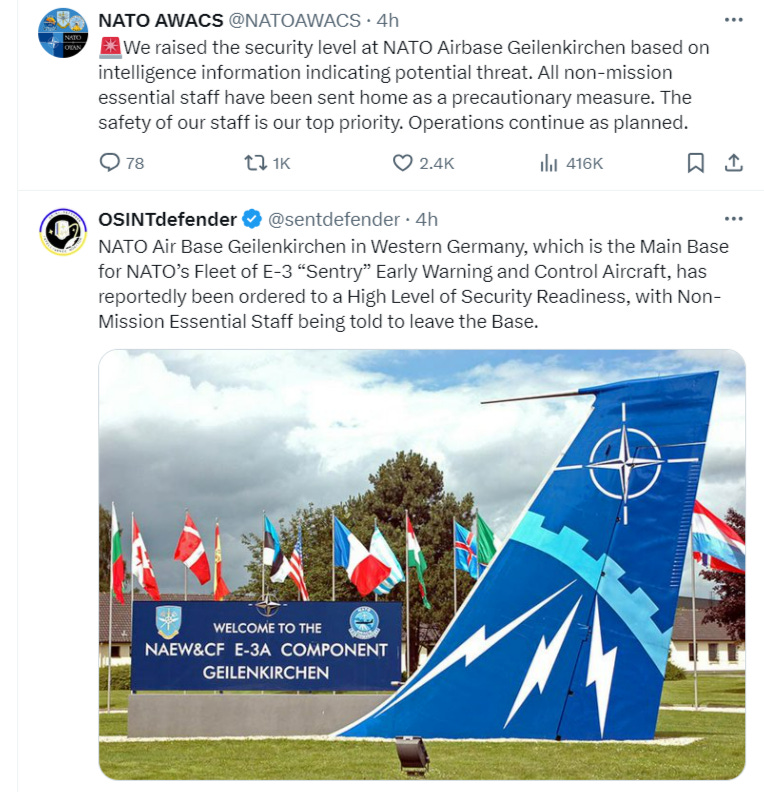
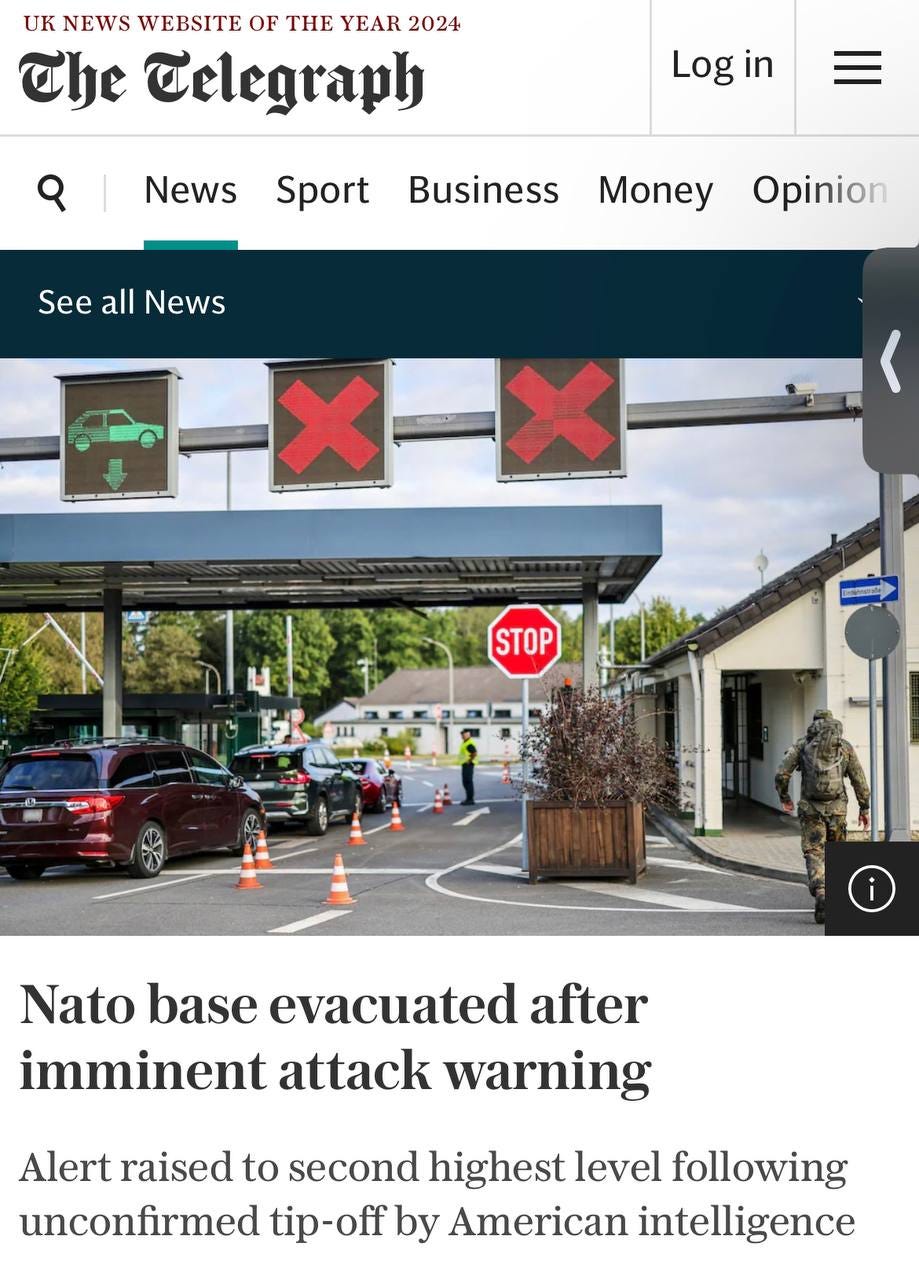
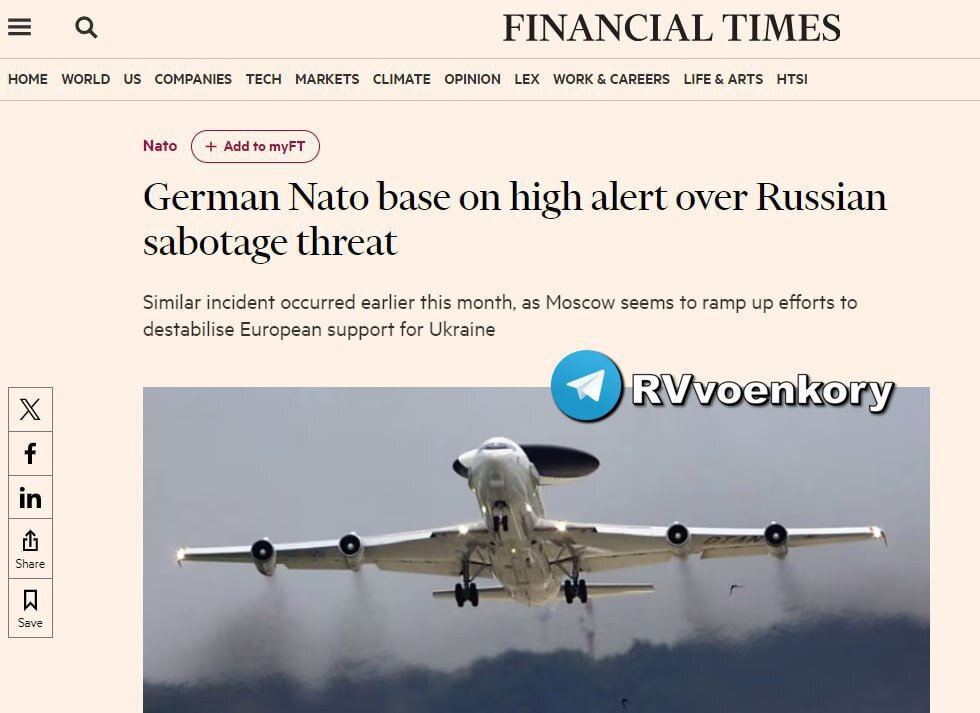
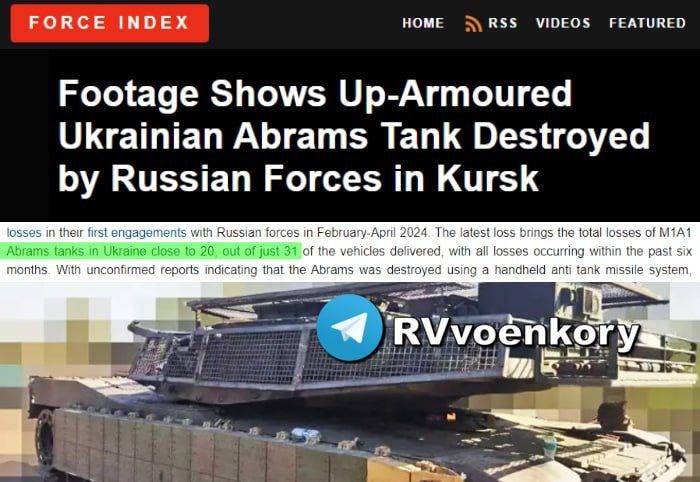
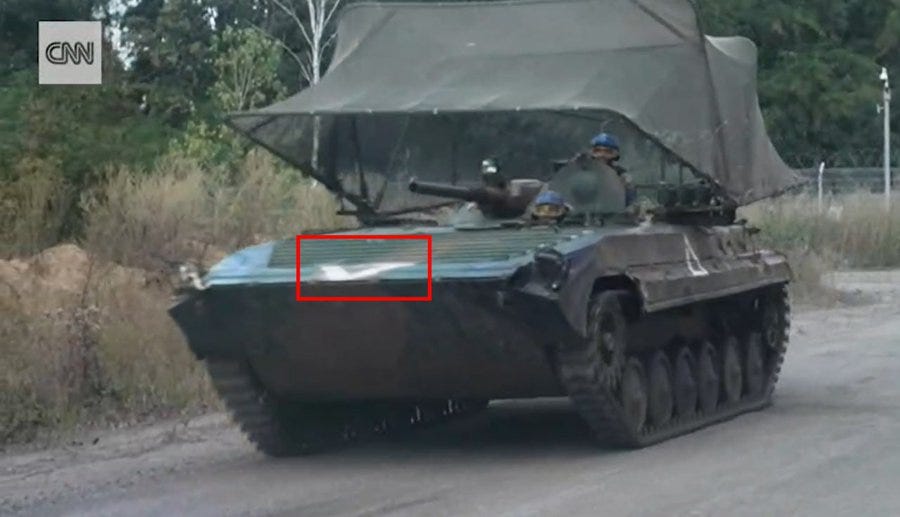
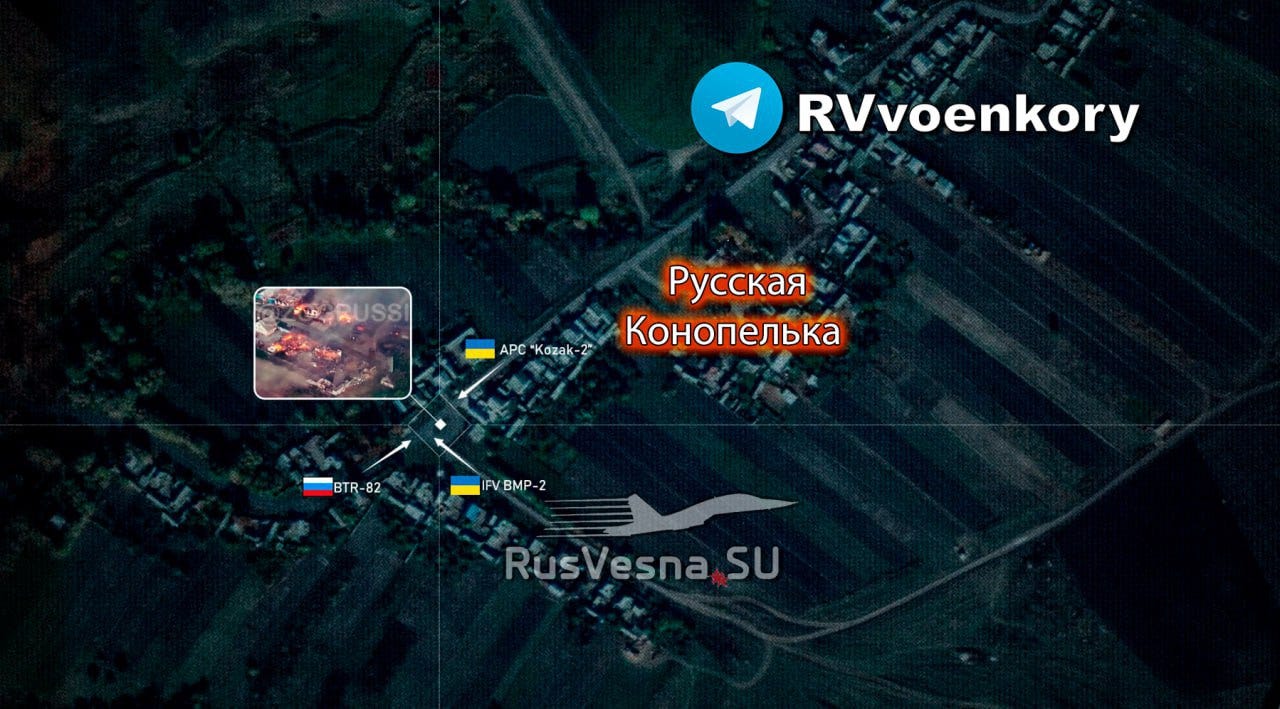
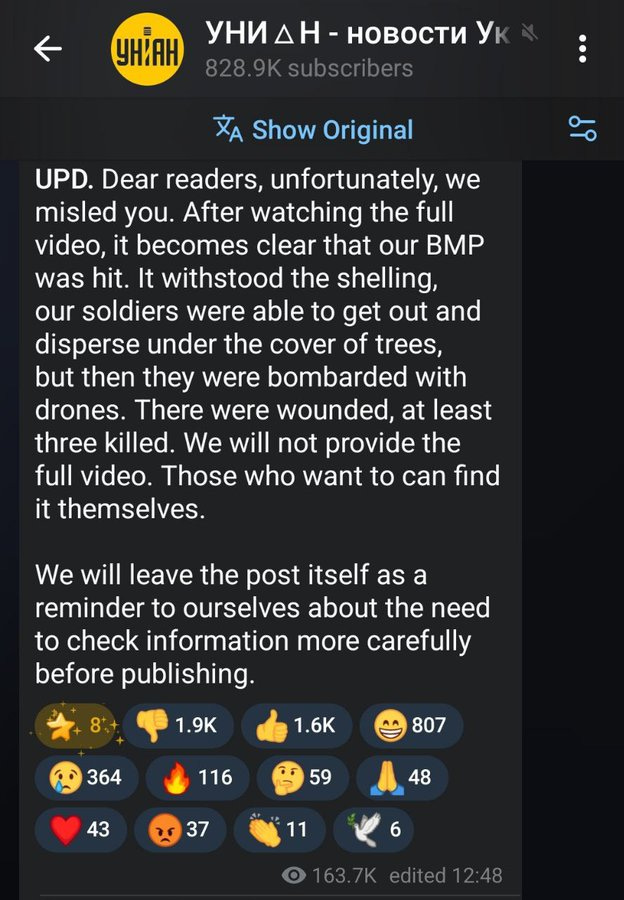
Thank you for the insightful article as always!
I have noticed that there is a wide range of opinions on the reasons for the Kursk incursion (and related psy-op campaign) and why things went the way they did, but some of them are practically never discussed, even though I consider them highly probable. Here is my own analysis of the incursion, based on sources, some of whom are relatively unknown RU experts:
1) I find the following theory as the most probable one regarding the reasons for this incursion. The whole idea of attacking Kursk was originally planned by the US masters as an October surprise to boost the Democratic party candidate's rating. Obviously, the situation on the front line is dire (and will be even worse by October), discrediting the foreign policy of the current US administration which seeks reelection. This October surprise would have helped to boost the narrative of the strong UKR which is capable to even strike deep into RU territory with the Western uber-weapons (yeah, just don't ask any inconvenient questions about why it's loosing on the primary front line if it's so strong, the Western media is more than capable to obscure inconvenient facts).
However, for some reason UKR went rogue and started it early. Possible explanations:
a) No time to wait as collapse of the Donbass front is imminent and the West is unwilling to supply more vehicles and weapons (with obscuring this fact by overhyping the news of F-16 delivery; BTW where are they, why they're not used?), keeping UKR on the bare minimum life support.
b) UKR leadership was worried that the plans will be leaked to Moscow and be ruined. There was a recent report in the western media (alas I forgot to save the source, I remember Simplicius quoting this) that at least two similar operations were cancelled due to American involvement—in one case they've asked to cancel the operation and in the other case the operation plans were leaked to RU.
c) (Maybe partially a reason but not standalone) UKR leadership wanted to make it coincide with the anniversary of the "Kursk" submarine disaster (August 12, 2000) which some are misrepresenting as the first Putin's disaster (well, it happened under Putin soon after he took power, but was he responsible?). And indeed, Zelensky played this thing in his speech on Aug 12 — look up "# Zelenskyy: Kursk disaster symbolized the start of Putin's rule, and now it's the end for him".
d) Probably UKR leadership simply didn't want to wait that long as the time is clearly playing against UKR in the ongoing attrition warfare and each minute reduced their chance of success.
2) Many experts while observing footage of FPV and missile strikes noticed that RU roads quality is extremely good compared to the decadent UKR countryside which we got used to see in the past two years. Some believe that it certainly paid a factor in the relatively quick road advance in the first two days as UKR was using wheeled vehicles and tried to drive as deep as possible until RU forces organized ambushes. Either way most of these advances were not an actual territory control but a game of tag to claim as many settlements as possible and help boost the TSIPSO narratives.
3) It's important to note the SMO command was not responsible for defending Kursk Oblast and securing the border (it was under guard of the FSB border service which is relatively weak armed). On more remote positions from the border there were regular military units (mostly conscripts) which are not officially engaged in the SMO and not under the command of the army group North which is dedicated to the neighboring RU Belgorod Oblast and creating the buffer area in Kharkov region of UKR (BTW, two days ago RU MoD announced that three new army groups will be organized to boost the defense of the border regions—namely Kursk, Bryansk, and Belgorod; better late than never?). According to the ex-colonel of RU AF Vladimir Trukhan, the first defense line in the area was organized approximately at the area which is currently holding the UKR armed forces, meaning that it's behind small towns (the biggest of which is Sudzha (population of 5000 as reported in 2024)). Why so? Big Serge mentioned in his article that the border area is very wooded in Kursk Oblast. It's also curvy. So the defense line never (not in RU nor in UKR or any country) matches the country's border line. The defense line usually goes on some distance from it, representing a less curvy line and utilizing more suitable terrain to maximize the defense capabilities. Vladimir Trukhan also noted that the civilian administration has the final say in matters of allocating land for military purposes (during peacetime), and some oddities associated with the line of defense may be due to this factor.
4) There is a conspiracy theory with people speculating whether the RU military command knew about the UKR plans but intentionally played along just to create a trap and lure the UKR forces in the new meatgrinder. Meaning that there was intentional endangering of RU citizens in the Kursk Oblast by evacuating them too late. According to the ex-colonel of RU AF Vladimir Trukhan again, it's not the case ("These are not our methods", as he said). While RU intelligence may have knew about the plans of some incursion, it was indeed organized with a high level of OPSEC and RU didn't knew the exact date and vector of the attack. "We have just missed it", Trukhan said. However, it doesn't mean that RU will not turn this tactical blunder into a strategic advantage. Putin, Medvedev, Lavrov, and Zakharova already stated that URK terrorist incursion preclude any negotiations, finally putting a nail in the peace talks effort lead by China and India. And the Chinese media have indeed been spinning the narrative since the first day of the invasion that the UKR acted dishonestly and attacked RU territory, effectively starting a war on the land that had not seen bloodshed since 1943, when the German tanks previously rushed toward Russia's impenetrable defenses...
5) I believe there was a strong angle to not only damage Putin's reputation but to actually cause civilian unrest, protests (especially if the advance was more successful), and, ultimately, change of the RU top military command which, if happened, will obviously hurt RU advances on the front line as the military will need to rework the plans and it often takes weeks if not months. With this incursion there was a blatant and overwhelming psy-op campaign of TSIPSO, which included not only comments in social networks and Telegram but also calls to the people in the border towns to spread panic, and several prominent "Russian" (most of them are actually UKR origin) military bloggers either exposing themselves as UKR SBU/GUR assets or at least as useful idiots by playing along with the UKR propaganda. E.g. there is a UKR-born blogger Yuri Podolyaka with over 3 mln subscribers in Telegram (who, BTW, has a son and ex-wife still living in UKR Sumy region as he confirmed in Nov'2022 when he also said that he will do "unthinkable" to anyone who expose or endangers them; majority of the people are unaware or ignoring this fact even though he said it himself and the video is still available in his Telegram channel). Podolyaka among others exaggerated the reach of the UKR successes and pushed the narrative that the Chief of General Staff, general Valery Gerasimov, should be held responsible for the failure of preventing the Kursk incursion (recently a new major disinformation campaign started to blame general Aleksandr Lapin, commander of the army group North). The previous time such a coordinated psy-op campaign happened during the Prigozhin's mutiny (it also targeted Gerasimov as well as Shoigu, who was, BTW, not fired this year but actually raised to the Secretary of the Security Council, in place of honorable Nikolai Patrushev). This time the psy-op caused a real panic in Kurks Oblast that resulted in traffic jams on the highway to the border towns which put in danger civilians and military columns and there were some successful FPV and HIMARS strikes (which, again, people like Yuri Podolyaka used as an opportunity to blame Gerasimov and RU command in general of incompetence, totally ignoring the fact that UKR as well moving their large forces in columns (which RU presented plenty of evidence of destruction over the years and even recently even in Kursk oblast, e. g. a column of 9 vehicles just two days ago by 810th separate guards marine brigade) and even if it was a smaller column it still was stuck in traffic jam organized by TSIPSO and military bloggers who were spreading panic). The same bloggers also overhyped the idea of the imminent Kursk NPP capture, again, totally ignoring the facts (even if UKR can drive special forces there risking getting cut from the main forces, the NPP is well defended by a national guard regiment and there is no chance that UKR may hold it).
Great write up, Simplicius.
I always try to understand the SMO in Ukraine as part of a broader geopolitical chess game being played by Russia/China/BRICS, with objectives that are historic in nature and that change the way the world works.
These objectives are the establishment of a separate economic, military, political and socio-cultural system that rivals the parasitic financial "rules based order" that the West has built, and that in fact may dominate it.
The overall Russia/China strategy requires on extreme discipline and strategic patience. In particular, it relies on containing the West at all costs and not permitting the West to escalate the situation to open warfare, that may bring in nukes.
This means that all parties with an interest in what Russia/China are doing must accept that they cannot react/retaliate in ways that help the West, even when the West inflicts both lethal and humiliating hits. That is the price they must pay to achieve the long term broader objective.
In my view, we saw this strategic patience at play with Russia's urgent intervention to persuade Tehran against a massive Iranian retaliation against Israel.
We have seen the same approach in China's posture towards Taiwan. We are seeing it again in Moscow's posture towards Kiev/NATO, following the flagrant incursion into Kursk.
In respect to Ukraine, I think that Russia's pacing of the SMO is dictated more by the broader geopolitical objectives described above, and less by what's happening on the ground in Ukraine. The broader geopolitical objectives require a longer timeline to achieve & Ukraine has to fit into that timeline.
From this oerspective, it makes sense for Russia to continue steadily draining Ukraine, the EU & NATO of treasure, men and materiel, without creating a pretext for the West to escalate, and also becoming more powerful in economic, military and political terms. This approach works and has created huge pressure on the West, as we have seen for the last 2.5 years.
Of course, this approach also requires Moscow to take opportunities that arise. I see the Kursk incursion as more an act of desperation by the West than anything else. It was always a desperate "Hail Mary" PR exercise that was forced on Kiev/NATO, who decided to invade Kursk because of the pressure / weight of Russia's strategy in Ukraine.
Kursk is an opportunity for Russia. Moscow may decide not to react in any meaningful way, and to continue the policy of strategic patience/attrition. However, it may be that Moscow has determined that the West's idiotic Kursk adventure creates a pretext & opportunity to persuade the West and in particular DC, to sacrifice and walk away from their doomed Ukrainian proxy.
This would presumably require Russia to demonstrate to the West what Russian firepower is capable of when pushed to full war limits, for example by destroying all political centres in Kiev and / or Lvov, perhaps liquidating Zelensky and his top people, combined with a significant increase in intensity in military operations on the front line.
Again, it would need to be a demonstration to the West that is powerful enough to cause real fear in NATO/DC - a tricky thing to do given that NATO seeks to be run by irrational morons who cannot grasp the drastic situation they have created for themselves. Indeed Moscow may well conclude against retaliating too harshly, for precisely this reason - they cannot predict what psychos in Washington or DC would do.
Anyway, my main point is to understand Moscow's approach in Ukraine by reference more to its overall geopolitical objectives, and less by reference to its objectives in Ukraine itself. Russia and China are trying to build a new & alternative global order while also managing a "controlled demolition" of a desperate and volatile western system. It's a monumental task that will require time, patience and resilience.
Many thanks.